Welcome back after Summer break!
In the final year of your A-level photography studies the focus is on narrative and visual storytelling. We will be continuing to explore the themes of OBSERVE, SEEK, CHALLENGE and build on your knowledge and understanding of how to combine images and text in creating photo-zines. In your development as a photography student we encourage you to engage with both traditional methods of image-making using your eye and camera, as well as utilising creative potential of new technology and tools such as generative AI.
In the first half of the term everyone will explore a set of collective/ creative tasks that will act as triggers and creative starting points in the second half where you will be exploring the theme more in-depth as part of your Personal Study unit which will lead you towards your final major outcome making a photobook, or film and writing an essay.
However, before that you will learn about different ways you can be a visual storyteller experimenting with making photo-zines in Adobe InDesign and a short film using Adobe Premier.
Other new software that you will be learning is audio software exploring the creative potential and possibilities of sound, that will be supported in a series of workshops by sound designer, Sam Hills (ex-Hautlieu student). Another alumni is Steve Carter who worked for many years in the film industry as an Art Director – including Hollywood. He will do presentation about his work and career and also provide feedback on the films that will be making.
BLOG > publish blog posts on a regular basis. You should aim for 2-3 blog posts per week. Mr Cole and myself will monitor and provide feedback online in comments provide updates on Go4schools tracking sheets.
Week 1: 4-8 Sept
RESEARCH & CONTEXT
Complete the following blog posts
Since prehistoric to modern time the sea has been Jersey’s connectivity to the outside world. As an island we are surrounded by water and it is through maritime routes that people travel and settle to form new families and communities. For island communities, their ports and piers hold symbolic as well as obvious practical significance. They facilitate trade and communication, and as an islands economy grows beyond the means by which it can support itself, they come to symbolise survival and possibility. People who live by the sea are defined by it and it’s intrinsically linked to the island’s history, geography, economy, identity and culture.
Stories of the sea, such as voyages, encounters and even shipwrecks holds mythological and romantic notions in the imagination of humans. Artists, writers, poets and filmmakers have for centuries been inspired by the sea and it’s many secrets.

Jèrriais, the Island’s old Norman-French language, retains to this day many words of Norse origin. There are many Viking words to do with farming (especially ploughing and harvesting) and fishing, ships and the sea. For example:
bete, bait, beita ;
dranet, draw-net, dragnet;
flie, a limpet, flie;
greer, to rig, greidi;
haler, to haul, hala;
crabe, a crab, krabbi;
mauve, a seagull, mar.
The sea is also a food source where fish and shellfish are caught to feed islanders and exported to markets in Europe and the UK. 98 % of all the goods that enters the island from food to fuel are carried by vessels. Industries, such as fisheries, freight operators, ferry companies, marine engineering and Ports of Jersey employ many skilled people. Likewise, leisure activities from tour operators, rowing and sailing clubs and islanders who owns boats are dependent on the sea.
TASKS – must be published on blog by Mon 9 Sept
1. Research Jersey’s maritime history within context of the Canadian cod-fisheries and the Transatlantic carrying trade . Explain how the merchant network operated with ownership and management in Jersey, production of codfish in Canada and markets in the Caribbean, South America, Mediterranean and the Baltic. Write 500 words and use images and maps to illustrate your knowledge and understanding. See resources below. Try and comment on some of these questions:
What was the involvement of Jersey mariners in the Canadian cod-fisheries and the Transatlantic carrying trade?
Which ports did Jersey ships sail to and trade with?
What type of goods did Jersey merchants exchange for cod-fish?
To what extend, has the island of Jersey benefitted from its constitutional relationship with Britain and the legacies of colonialism based on a slave plantation economy during the first Industrial Revolution (1760-1840)?
RESOURCES
Make good use of the resources an reading material listed below that will provide you with an overview of the maritime history in the Channel Islands and context of Jersey’s involvement in North Atlantic cod-fisheries.
Reading material:
In 2021 Jersey Heritage produced report with details of current knowledge of Jersey’s links to the transatlantic slave trade. Read here: Jersey Heritage report on legacies of Transatlantic slavery in Jersey
Jersey historian Doug Ford carried out much historical research in 2006 as part of the efforts to mark the bicentenary of the abolition of the slave trade. Read: A respectable trade or against humanity?
The UCL Legacies of British Slave-Ownership website with the database of the 1834 Compensation Register which lists all people who claimed compensation when slavery was abolished. https://www.ucl.ac.uk/lbs/ –
This website which lists all slave journeys –https://www.slavevoyages.org/
MARTIME HISTORY OF THE CHANNEL ISLANDS
For an overview of maritime activity in the Channels Islands, see link here. Below are some of the key developments:
The Channel Islands are a group of islands off the coast of France. The largest island is Jersey, followed by Guernsey, Alderney, Sark, and a number of smaller islands, islets and rocky outcrops. The islands were separated from mainland Europe with rising sea levels in the Neolithic period; thereafter maritime activity commenced.
Needing to trade, the islanders were innovative. Over time they built up skills, earning money and investing capital in maritime businesses.
Stone and Bronze ages: The presence of Statue menhirs on the islands, such as at St Martin’s church on Guernsey and the burial mound at La Hougue Bie, Jersey, give evidence of populations either living on or visiting the islands.

Iron age: Archaeological evidence of trade from the Iron Age period is in evidence in the Islands, with goods manufactured on the western coast such as armlets, Breton pottery and amphorae from the Mediterranean indicating trade along the Atlantic coast from Iberia to Ireland. Armorica was the nearest trade zone.
Roman: Hoards such as the 70,000 coins found in the Grouville Hoard have been discovered, although their reason for being in Jersey is open to speculation. Roman settlements on the islands show evidence of an intricate trading network with regional and long-distance trade from 120 BC after the Romans occupied southern Gaul, especially using Guernsey where amphorae from the Herculaneum area and Spain have been found.
Middle ages: The arrival of Christianity including Samson of Dol, Helier, Marcouf and Magloire shows the rise in regular shipping to and from the islands in the 6th century.
Piracy/raiding especially by Vikings took place throughout this era. The Viking leader Rollo besieged Paris in 911, resulting in 933 with the islands, formerly under the control the Duchy of Brittany, being annexed by the Duchy of Normandy.
Piracy in the islands mainly died when Sark was colonised by Hellier de Carteret in 1563 and they lost their last refuge. Some pirates still hid out in isolated English and French bays, others sailed up from the Barbary Coast, or even Turkey, ransoming valuable captives or keeping them as slaves. It was replaced by legal piracy in the form of privateering. Ships issued with a letter of marque giving the ship the right to capture ships and goods of a specific enemy and to keep the profits.
During the War of the Three Kingdoms Jersey became a base for Royalist privateers between 1643 and 1651, most notably George Carteret who in late 1643 became Lieutenant Governor of the island (more about him later)
Early modern: Covering the period from the 15th to the late 18th centuries, the era saw trade increase with the technical improvement in ships and navigation, and the ability to sail out of sight of land for days on end, until the end of the Napoleonic Wars.
The main trade continued cross channel, where the islands were given concessions. These included dried cod from Newfoundland and Gaspe coast, cloth, wine, wool, leather and household goods. You can read more here about Jersey settlements in Gaspe.


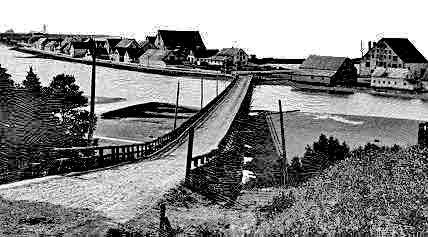

Jersey cod-merchants also exported cod-fish to British colonies in the West Indies and later Brazil too in exchange for plantation goods, such as sugar, molasses, rum, cotton, coffee and tobacco which it brought to markets in America, Europe and the UK (inc. Jersey). Within that context Jersey benefitted from the profits made in the British Empire build on a capitalist model of a slave-based economy.

Both islands established Chambers of Commerce as the merchant families expanded and grew in wealth. These families included Tupper, Priaulx, Le Marchant and De Jersey from Guernsey and De Ste Croix, Robin, Janvrin and Hemery from Jersey, often intermarrying to avoid rivalry.



Ship building only became a serious business in the islands in the late 18th century with the requirement to build ships larger than fishing boats allowing Jersey merchants to take part in the Atlantic carrying trade. Between 1760 and 1815 Great Britain was at war for 36 years, which affected the maritime trade, causing dangers and opening possibilities of profit.
Late Modern: This period covers the rise of the British Empire into the Victorian era, through the First World War and then the Second World War. This saw the introduction of iron ships, steam, then oil powered ships.
Island-built wooden sailing ships were going further, opening up more ports in South America and even going to Hong Kong and Australia. By the 1850s Jersey had 300-400 ships with a tonnage of over 40,000.

Emigration: The ships provided an opportunity for emigration and many families moved to Australia, New Zealand or America. For example, a number from Jersey settled in Salem, Massachusetts and were among the accused in the 1693 Salem witch trials
St Aubin was the main harbour for Jersey merchants before St Helier became the central maritime hub. St Helier harbours were proving too small for the larger ships and increasing tonnages, with both drying out at low tide. Jersey added a few piers to its harbour, such as Victoria and Albert Piers.

The change from sail saw a major decline in the maritime activities of the islands: commercial shipbuilding had boomed in the 1850s with 20,000 tons a year before collapsing to 3,000 tons built per year in the 1880s, as iron and steel were not available in the islands. By the end of the century, island fleets had just 150 ships with a total tonnage of just 11,000.
World Wars I and II. The First World War saw island shipping used for the war effort. The peace then saw a demand from visitors for transport with in boom in tourism. The islands were occupied by the Germans during the Second World War, and most island-based ships went to England in June 1940. Initially a number of fishing and private boats, then later smaller craft, made the perilous journey with over 200 escaping islanders. Not all survived: some were captured or shot, others drowned.

Since the war, fishing has been reduced, with lobsters and crabs becoming the main catch in the islands with an annual value of around £10m in 1995. Private boating has increased with the construction of marinas. Freighting changing from loose and pallets to containers with Ro-Ro for vehicles. Hydrofoils and then catamarans and wave piercers appeared as fast passenger ships.

Today, Ports of Jersey operates all entry and exit points to the island, including harbours and airport. They have plans to re-develop St Helier Harbour into a modern commercial maritime hub – see their Harbour Masterplan here.
CONTEXT > Triangular cod-trade
For centuries Jersey’s maritime economy dominated island life and many merchants were engaged in the Atlantic trade, referred to as the ‘merchant triangle’ with commodities of manufactured goods and agricultural products exchanged in different outposts in the British Empire and other European colonies in the Caribbean, South America and Mediterranean. However, Jersey’s financial success derived from the North-Atlantic cod-fisheries established first in Newfoundland late 16th and 17th centuries and later in Gaspé in the province of Quebec in 18th and 19th centuries.



Charles Robin Company’s headquarter in Paspebiac in the Bay of Chaleurs in Gaspe is now a museum, see link here
Jersey’s colonial past is linked indirectly with slavery as merchants and shipping were part of the supply chain of goods and products in the transatlantic trade. One of Jersey’s premier cod-merchants was Charles Robin who founded Charles Robin Company in 1766 (second oldest incorporated firm to be founded in Canada which only ceased operation in 2006 albeit under different ownership).

Robin produced two types of salted cod-fish called ‘green’ and ‘yellow’ in the vernacular. ‘Green’ was a wet salted codfish that was not dry cured and therefore did not have the same shelf-life. It was ideal selling it at markets in the Caribbean or North East Brazil as it was much shorter run for Robin’ ships on the second leg of the triangular Atlantic trade. In his own 18th century diary Charles Robin refer to it as ‘West India fish’ and it was sold to planters who would feed the protein rich codfish to its enslaved populations for increased productivity in the plantations. In exchange, Robin would load his ship with plantation produce such as sugar, rum, molasses, cotton, coffee and tobacco before sailing across on the third leg of the Atlantic triangular trade route to the Mediterranean, England and Jersey.

‘Yellow’ was a dry-cured cod and marketed as a premier product and sold to markets in Europe, such as Portugal, Spain and Italy with their large Roman Catholic populations having a great demand for fish for fast days on Fridays. From ports in Lisbon, Cadiz and Naples merchants traded cod-fish for other products such as salt (used in the curing process), wine, spirits, fruits and spices which they brought back to Jersey and British ports before returning to Canada. The maritime networks were complex and often financed from London. Read another article here from Jersey based critic, Ollie Taylor Fish, Finance and Slavery.


If you look up shipping news in old Jersey newspapers La Gazette de Jersey or La Chronique de Jersey ships would leave St Helier Harbour with supplies to slave stations in West Africa, such as the notorious Cape Cod Castle on the Gold Coast of Ghana. For example, on 8th June 1854 Newport, a 106-ton schooner brig owned by F Le Sueur, jnr, P Le Sueur and JF Le Sueur, mastered by sea captain, Charles Philippe Hocquard left port bound for Ambrez, Angola. On the ship’s manifest (a customs document listing the cargo, passengers and crew) were 25 cases of muskets, 20 cases of knives, five cases of hatchets, one case of bells and padlocks, to be delivered to a Senor Francisco Antonio Florese, who was known as a slave trader. On 21st September 1854 she was stopped and searched by HMS Philomel and taken to St Helena, where she was condemned in the Admiralty to be sold.
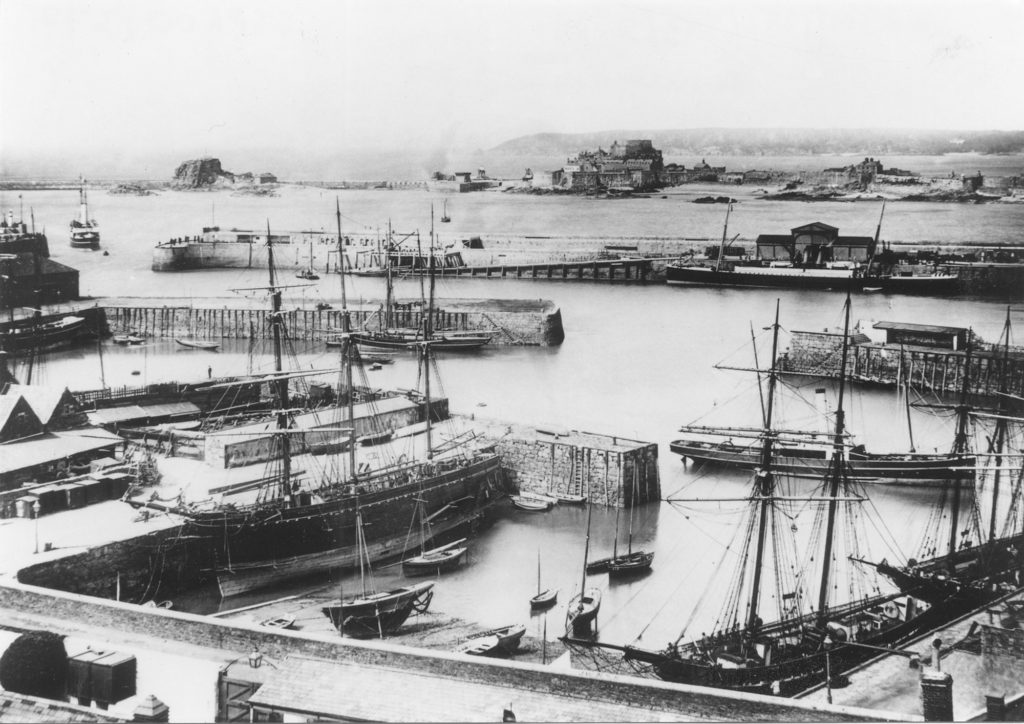


CONTEXT: Sir George Carteret and the Transatlantic Slave Trade
Sir George Carteret (1610–1680) was Bailiff when King Charles I was executed and had his son Charles II proclaimed King in Jersey. He had been a naval officer and was later to serve as Treasurer of the Navy. He was given large tracts of land in the American colonies by Charles II.
In 2015 Mr Toft published Atlantus together with Dr Gareth Syvret (former photo-archivist at Société Jersiaise) which is a transoceanic photography project about the connected history between Jersey and New Jersey, prompted in part by the 350th anniversary in 2014 of Sir George Carteret naming of the State of New Jersey, USA after Jersey his island home in 1664.


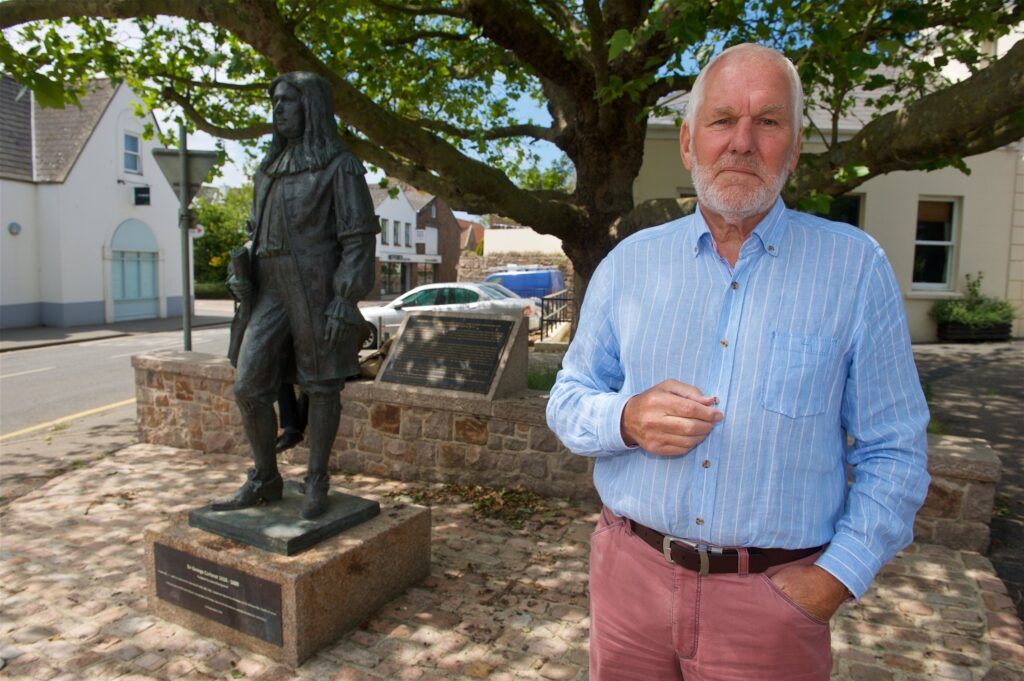
In 2014 a public statue of Sir George Carteret was unveiled in St Peter to commemorate his achievements in relation to the 350th anniversary of the state of New Jersey. Sir George was a prominent investor and consultant in the Company of Royal Adventurers Trading Into Africa, which was a major player in trafficking slaves from Africa as well as gold and ivory. Between 1662 and 1731, the Company transported approximately 212,000 slaves, of whom 44,000 died en route. By that time, they also transported slaves to English colonies in North America. Its profits made a major contribution to the increase in the financial power of those who controlled the City of London. Sir George received a dividend until his death and his son James Carteret commanded one of the slave ships, Speedwell with 302 Africans on board in the early years (1663-64) of trading from Benin to St Kitts in the Caribbean.
Please read the latest article by Jersey independent reporter, Ollie Taylor (Nine by Five Media) The whitewashing of George Carteret and watch a video below of its unveiling in St Peter with a commentary by the former Constable John Refault who describes Sir George Carteret as a hero, ‘Jersey’s greatest son’, one of “Jersey’s great figures” and a role model for youngsters.
It is true that the biography of Sir George Carteret (b. 1610 d. 1680) include many extraordinary deeds such as commandeering ships in the Royal Navy and rising quickly through the ranks to become the Comptroller of the Navy in 1641 and eventually Vice Admiral. Between 1643 and 1651 he was both appointed Lieutenant Governor and Bailiff of Jersey. But it was his loyality to Prince Charles II, who was exiled in Jersey twice during the English Cicil War after the death of his father King Charles I that propelled him to power and influence. After the restoration of the monarchy he was granted lands in the new British colony in North America, including the Carolinas and a territory south of New York, which he named New Jersey after his island home. There are some people who only wish to remember this part of his life, but there is a growing demand that his links with the Royal African Company and the Atlantic slave trade must be included in the historical records. It’s important to recognise that history is never fixed and new research, new interpretations are made continuously as new material emerge and different scholars examine the archives. There are many different histories depending on who is telling them and it is your duty as future citizens to examine all points of view and analyse claims and counter-claims.


The statue pulled down in Bristol in 2019 was of Edward Colston who was the Deputy Governor in Royal African Company, which succeeded The Company of Royal Adventurers Trading Into Africa in 1672 with a new and broader royal charter than the old one, which included the right to set up forts and factories, maintain troops, and exercise martial law in West Africa, in pursuit of trade in gold, silver and African slaves. Read article here in The Guardian about Colston statue in Bristol.
The decision to erect the statue of Sir George Carteret was questioned by Deputy Montfort Tadier, who as Minister for Culture in 2019 said that it was a different case to the Edward Colston statue because that had been put up in Bristol around 120 years earlier, during the closing years of Queen Victoria’s reign. He has lodged a proposal Jersey and The Slave Trade to discuss how the island deals with its past at the next States Assembly.




There was also controversy when part of the International Finance Centre was named Trenton Square after the capital of New Jersey, which was itself named after trader William Trent, who had links with slavery. Read more here


In the JEP last Saturday (13 June 2020) there were 3 Opinions published by columnists, Susanna Rowles, Tom Ogg and Gary Burgess. Very diverse points of view about how to address the issues of racism and the wrongs of the past, but all comments written by ‘white’ people. Where is the representation of BAME (Black, Asian and minority Ethnic) voices?
Read an islander who is mixed race talk about white privilege and another article in the Bailiwick Express that urges Jersey leaders to dismantle institutional racism in the work place and wider community at a protest for racial justice at People’s Park on Saturday 6 June.

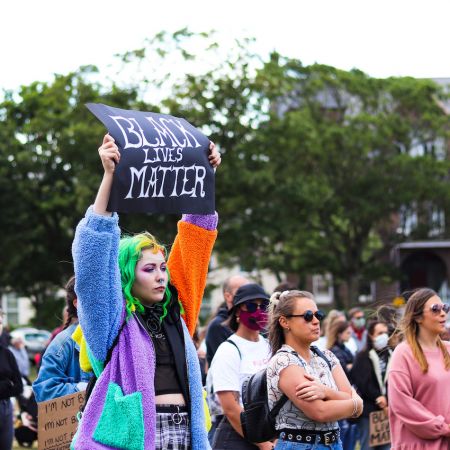



PRACTICE > ENTREPÔT – a photographic research project
Mr Toft has developed a number of long-term photographic based research projects exploring Jersey’s maritime history and heritage with links to slavery such as, Entrepôt and his recent short film The Seaflower Venture.


The Seaflower Venture is a short film based on the life of Charles Robin, Jersey’s premier cod-merchant who founded the most successful firm on the Gaspé Coast in 1766. Using extracts from his own diaries and a fictional biographical narrative of Robin’s life the film re-imagines a merchant triangle – a three-pointed trading system with production in Canada, management in Jersey and markets in Brazil, Italy, Spain, Portugal and England.
The narrative of the film is created around a sea journey of a Robin ship loosely based on an actual abstract journal of a voyage recorded in a Deck Log written by sea captain Peter Briard (senior) who was employed by the Charles Robin Company and successfully mastered the Robin ships ‘Day’, ‘Oliver Blanchard’, ‘Christopher Columbus’ and ‘C.R.C.’ from Gaspé to Naples and Palermo every year for nearly twenty years between 1818 to the late 1830s. It includes a two-hander poetic dialogue between a young and old Charles Robin based on an adaptation from two archival records, such as his own 18th century diary (The Early Journals of Charles Robin 1767-73 & 1787) and an unpublished biographical narrative (The Seaflower Venture) written by Phyllis Gertrude Ross held in the library at the Société Jersiaise.


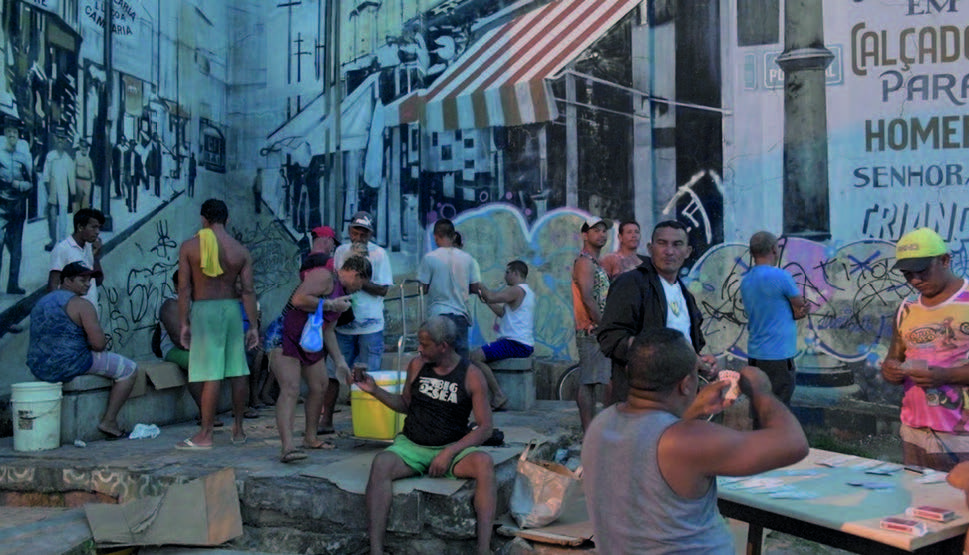
Specific footage in the film from the Recôncavo – Bahia’s rich agricultural and industrial maritime district in North-eastern Brazil – features images from a small rural town Muritiba in
the municipality of Cachoeira where a coffee plantation was owned by Jerseyman, Jean Gibaut and later his son John Frederick Gibaut. From judicial records in Salvador a civic court case from 1851 confirmed that the Gibaut Estate was one of the largest plantations in the area using slave labour and pioneering mechanisation. Both Jean Gibaut’s brothers, Moses Amice Gibaut and Francis Gibaut were sea captains working for Charles Robin Company in Gaspé. Today descendants of the Gibaut family still reside in Muritiba, where a street, Rua Gibaut is named after the plantation where it once stood.


A daguerreotype held in the Society Jersiaise Photographic Archived with the inscription: John Frederick Gibaut, born in Bahia 22nd May 1823, daguerreotyped in Muritiba, November 1843.


Entrepôt is a maritime photographic research project exploring the history of Jersey’s cod-fishing trade in Canada and its merchant networks in the West Indies, South America, Mediterranean and Baltic in the 18th and 19th centuries.
It is examining through the prism of colonial and family history, how Jersey’s original wealth generated by the proceeds from the North Atlantic fisheries and merchant networks in the 18th and 19th centuries lay the foundation for the island’s economic growth and development in the 20th and 21st centuries as an International Finance Centre. Theoretically, my project Entrepôt is based around Rosemary E. Ommer’s structural economical analysis of the Jersey-Gaspé cod fishery which reveals a functional three-pointed trading system in what Ommer refers to as a ‘merchant triangle’ with production in Canada, management in Jersey and markets in the Mediterranean, the West Indies, South America and the Baltic. Ommer’s central question in her book is: ‘How did the cod-fishery, functioning as a commodity trade, shape the economic development of the metropole that managed it and the colony that produced it.’ (Ommer in Outpost to Outport: A Structural Analysis of the Jersey-Gaspé Cod Fishery, 1767-1886)
Mr Toft has just returned from 6 weeks research and field studies trip to the Caribbean where Charles Robin would send ships laden with salted codfish from his headquarter in Paspébiac via established trade routes with markets in the Caribbean, primarily the islands of Barbados, Dominica, Martinique, Grenada, St Lucia and occasionally also Jamaica, Cuba, Santo Domingo and Trinidad and Tobago dating from 1777 to 1931. In total he produced 25,000 new images and gathered other visual and textual material from research in national archives. Whilst there he published two dispatches on his blog:

La Pearle Estate, Soufrière, St Lucia. 2024


St Lucia. 2024
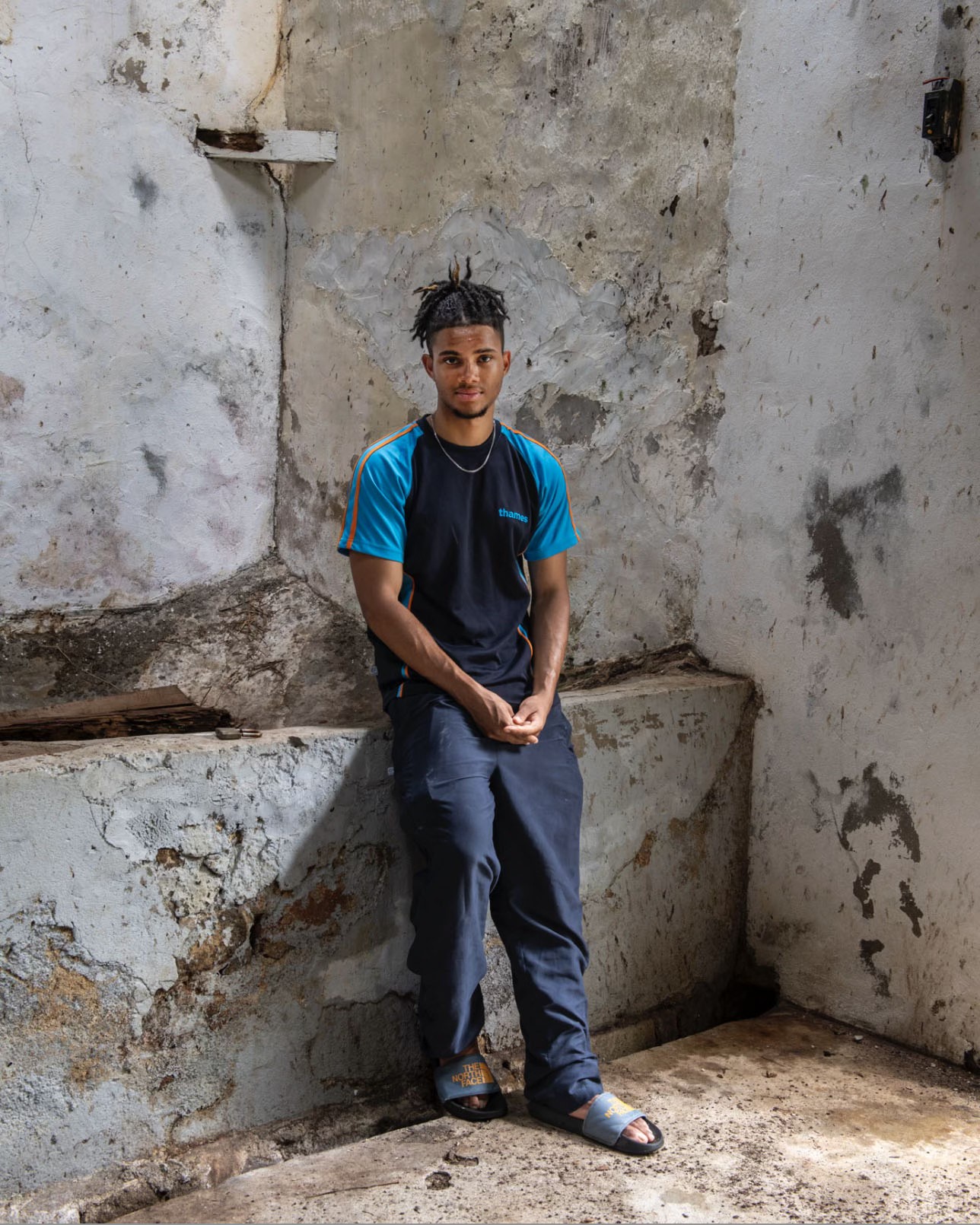
In 2019 Mr Toft spend 6 weeks in Belize and Honduras and in the colonial records uncovered interesting details regarding several Jersey merchants operating as mahogany cutters and their slave populations. I also surveyed the colonial landscape and explored several estates belonging to Jerseymen and the communities that their mahogany works fostered. Additionally, I tracked down descendants currently living in Belize and the Bay Islands of Roatan and Utila (Honduras) with direct ancestral links to Joshua Gabourel who arrived here from Jersey in 1787. Some of this material includes:
- Census records and Slave registers from Belize with names of Jersey merchants and their households
- Inventory and Appraisement – list of land and property owned where ’negroes’ are listed alongside, goats, cattle and farm equipment etc
- Invoices of buying and selling slaves.




If you wish to learn more about the mahogany trade in Central America, and in particularly, British Honduras, read this essay Furnishing the Craftsman: Slaves and Sailors in the Mahogany Trade by Dan Finamore,Curator of Maritime Art and History at the Peabody Essex Museum in Salem, Massachusetts. It gives a very detailed account of extracting mahogany wood from its dense forests under strenuous hardship of African slaves and shipping it to North America and Europe (including Jersey) and be turned into fine bespoke furniture to adorn the large mansions of the merchant class known as ‘cod-houses’ (maison terre-de-neuve.) Mahogany and other exotic hardwoods were also used successfully in the growing shipbuilding industry in Jersey for decorative purposes.




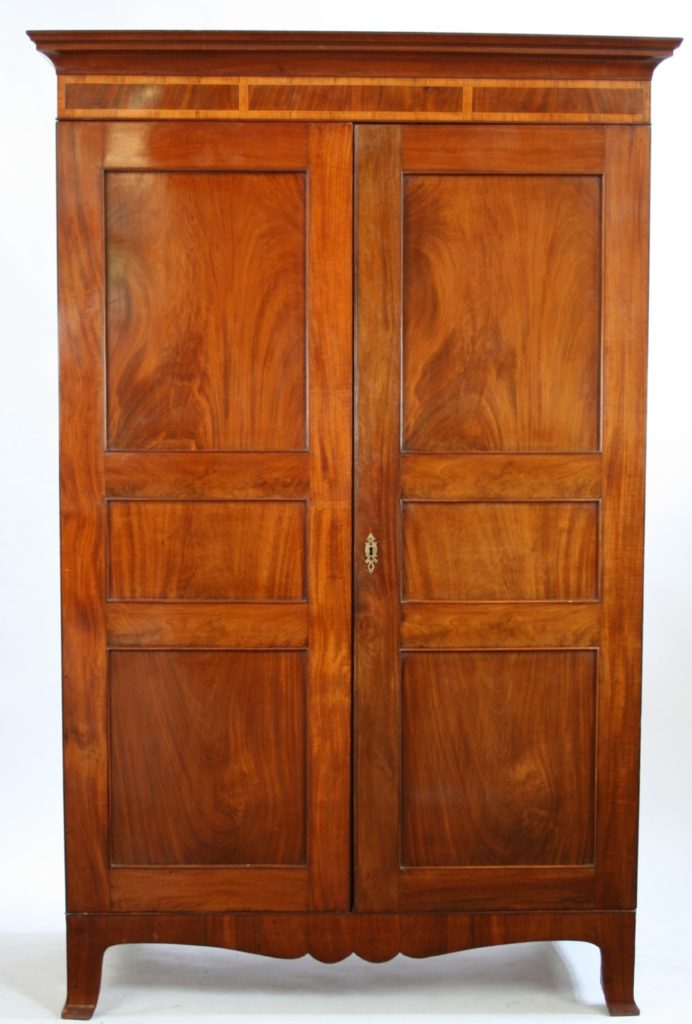
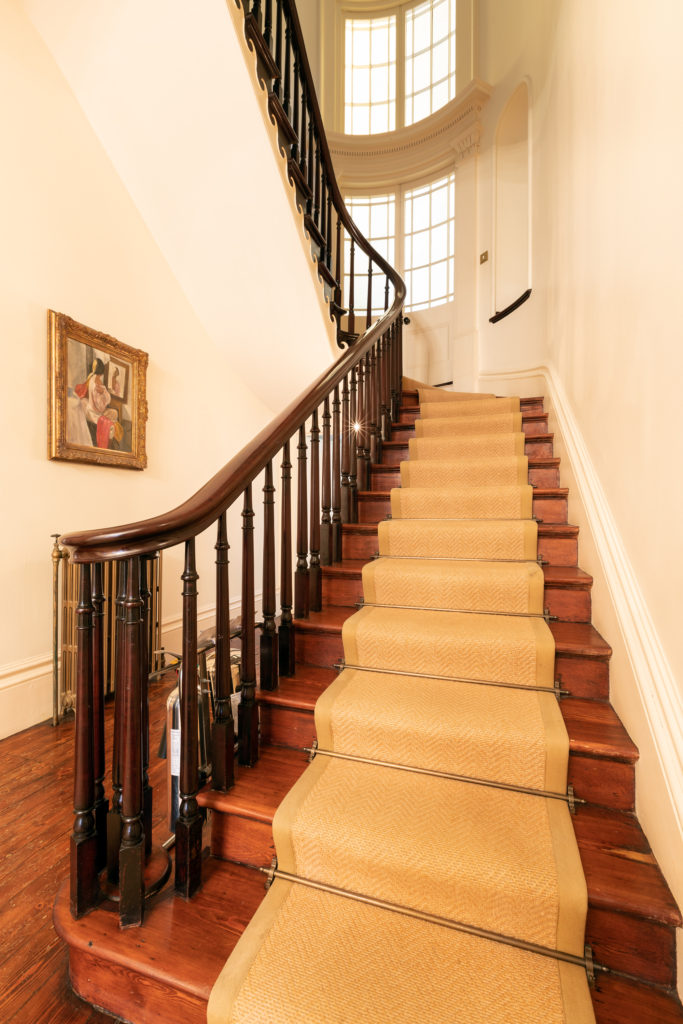







Week 2: 9-15 Sept
PLANNING & RECORDING
Complete the following blog posts
1. Provide a short history of the development of St Helier harbour and produce a mood-board of images that show changes from mid-19th century up until today, including future plans to transform the port into a modern maritime hub (1830s – 2020s). Annotate images and describe what they are depicting (ships, industries, harbour facilities, port workers, visitors, views etc.), location (pier, quay) and any other information that would be of interest. This mood-board will be used as inspiration for making your own images and photographic responses to St Helier harbour.
Here is a link to a folder with images from the Societe Jersiaise Photographic Archive and other visual repositories.
M:\Radio\Departments\Photography\Students\YR 13 OBSERVE, SEEK, CHALLENGE 2024-2025\ST HELIER HARBOUR
History and development of St Helier Harbour
Saint Helier Harbour is the main harbour on the Channel Island of Jersey. It is on the south coast of the island, occupying most of the coast of the main town of St Helier. It is operated by Ports of Jersey, a company wholly owned by the Government of Jersey.
Maps of St Helier through time.


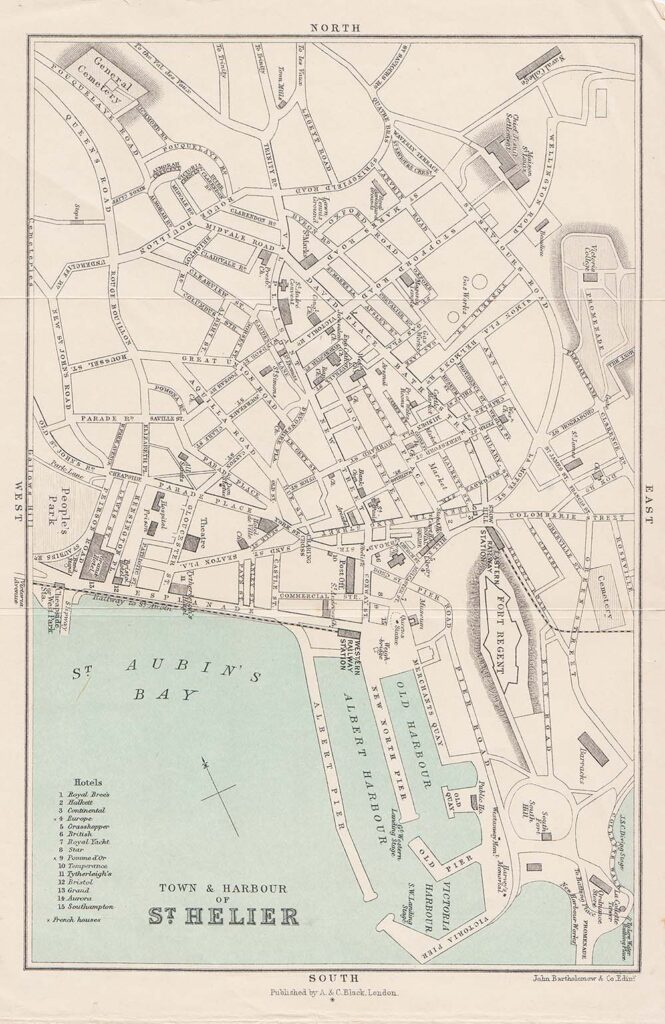

Here is a link to an interactive map.
Facilities include three marinas for berthing private yachts on pontoons, drying harbours and facilities for commercial shipping including roll-on/roll-off ferry berths, a tanker berth and a dock for lift-on/lift-off cargo ships.
Etymology: Saint Helier Harbour is named after Helier (or Helerius), a 6th-century ascetic hermit from Belgium. The traditional date of his martyrdom is AD 555. His feast day, marked by an annual municipal and ecumenical pilgrimage to the Hermitage, is on 16 July. If interested, you can read more here bout the growth of St Helier.
History: The harbour was constructed in the early 19th century. Previously, ships coming into the town had only a small jetty at the site now called the English Harbour and the French Harbour. The Chamber of Commerce urged the States Assembly to build a new harbour, but they refused, so the Chamber took it into their own hands and paid to upgrade the harbour in 1790. A new breakwater was constructed to shelter the jetty and harbours. In 1814, the merchants constructed the roads now known as Commercial Buildings and Le Quai des Marchands to connect the harbours to the town and in 1832 construction was finished on the Esplanade and its sea wall. A rapid expansion in shipping led the States of Jersey in 1837 to order the construction of two new piers: the Victoria and Albert Piers.
The Old harbour: English Harbour and French Harbour have berths for over 500 motorboats and sailing yachts which dry out on the mud at low tide. The abandoned pub, La Folie Inn is also situated here and so is South Pier where you will find marine engineers South Pier Marina and St Helier Yacht Club.
Main harbour: The main harbour provides deep water berths for commercial vessels alongside the Victoria Quay and New North Quay. On Victoria Quay you will find fish wholesalers such as, Fresh Fish Company and Aquamar Fisheries. Albert Pier has now been re-developed from a ferry terminal to new berths for large vessels and yachts. Read about new development here and also look through ED.EM.04 – Victoria and Albert: on the Piers a photo-zine produced by the SJ Photo-archive.
Elizabeth harbour: The Elizabeth Harbour consists of a ferry terminal, two roll-on/roll-off ferry berths and a trailer park for shipping containers. These are used by high-speed craft to Poole, Guernsey and Saint-Malo, traditional ferries to Saint-Malo, Guernsey and Portsmouth and foot passenger ferries to Granville, Barneville-Carteret and Sark
Marinas: There are three marinas — the La Collette Yacht Basin, the Saint Helier Marina (built in 1980) and the Elizabeth Marina. The La Collette Yacht Basin is the only one of these to provide non-tidal, 24-hour access to the sea and is home to Jersey’s commercial fishing fleet.

Since 2008, Saint Helier Marina has been the venue for the annual Jersey Boat Show.
Here is a picture gallery of images from St Helier Harbour from 1940s t0 21st century.


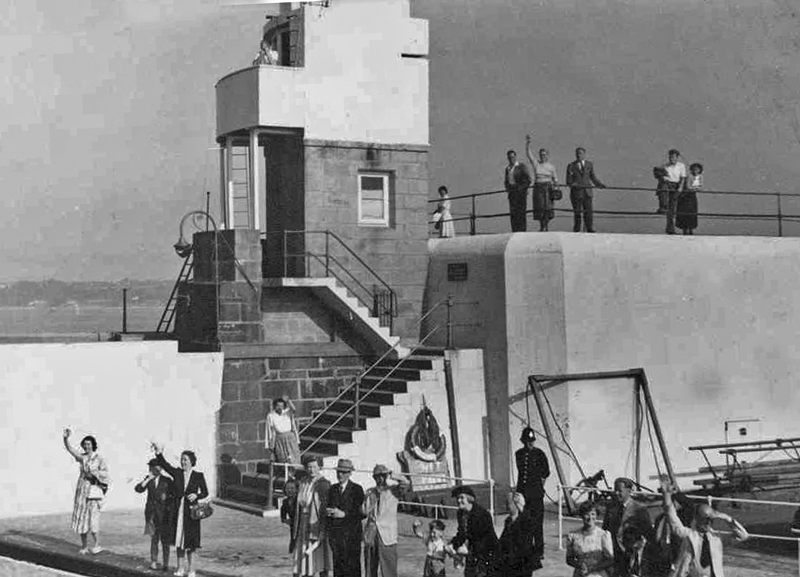








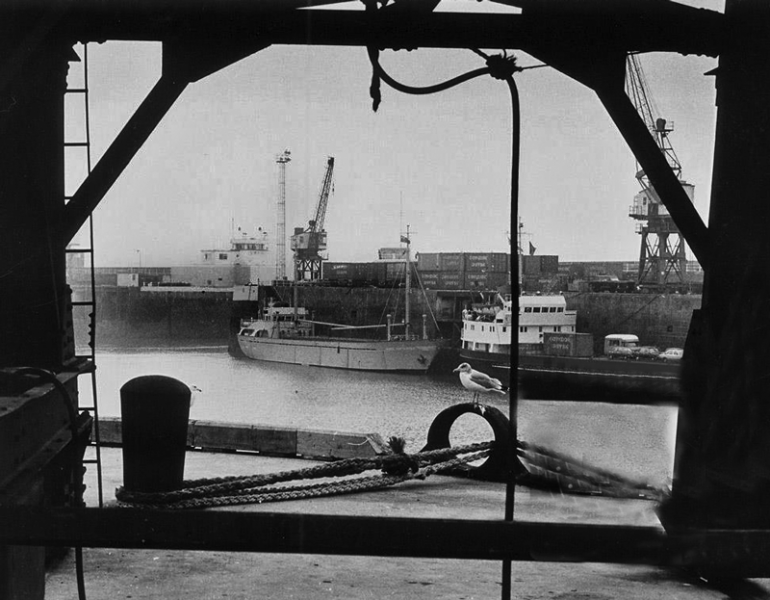





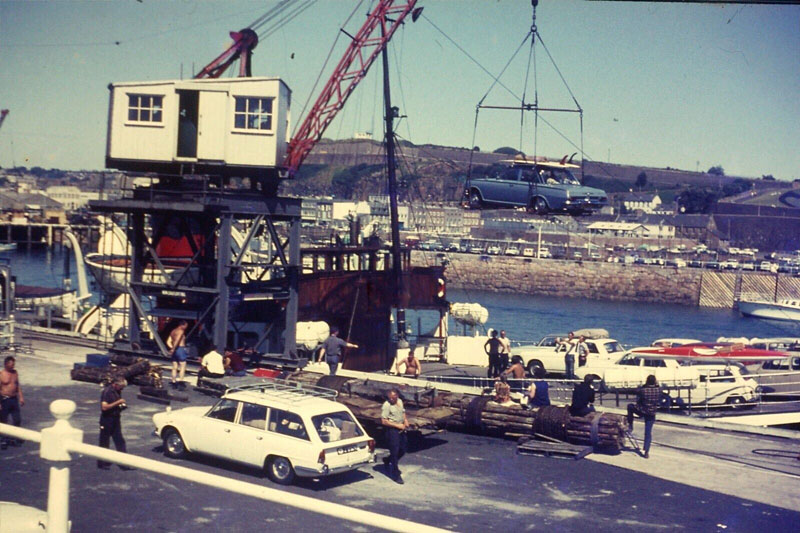





Maritime Museum: We will be visiting the Maritime Museum on Wed 18 September for a guided tour by local historian Doug Ford. You will have an opportunity to make images of objects on display which relates to maritime activities. Here is a link to their website for more information.

Tue 10 Sept > First school trip
Société Jersiaise Photographic Archive and St Helier Harbour
Location:
08:45: Meet at Société Jersiaise, 7 Pier Road, St Helier ready for 09:00 start. Students make their own way and must bring own camera, (with card and fully charged batteries), good footwear, appropriate clothing and provisions for lunch.
Activities:
Tue 10 Sept
09:00 – 10:00: Presentations by photo-archive team about relevance of photo-archive and showing examples of images and objects from the collections with reference to St Helier Harbour, Jersey’s maritime heritage and early photographic techniques.
10:00-10:15: Break
10:15-11:15: Workshop: In groups students will work with set of images from different collections and construct a visual narrative through sequencing. Each group present.
11:15-11:30: Break
11:30-13:00: Photoshoot 1: SH Harbour >
Old Harbours (English and French harbours), La Folie Inn/ South Pier
Brian Nibbs, former Harbour Master and blue badge guide will join us for a guided walk.
13:50-15:20 Photoshoot 2: SH Harbour >
Albert Pier, Elizabeth Terminal, Elizabeth Marina.
Each group will swap sites for photoshoots.
Wed – Fri: PHOTO-SHOOTS
Upload new images from St Helier Harbour to M:drive and begin to edit in Lightroom.
Follow these instructions:
EDITING:
- Save shoots in folder on M:drive and import into Lightroom
- Organisation: Create new Collection Set: St Helier Harbour
Create a new Collection from new shoot inside Collection Set: Photoshoot 1 - Editing: select 10-12 images from your shoot.
- Experimenting: Adjust images in Develop, both as Colour and B&W images appropriate to your intentions.
- Make sure you have standardised all the pictures in terms of exposure, brightness/ contrast, colour balance using Sync Settings
- Export images as JPGS (1000 pixels) and save in a folder: BLOG
- Create a Blogpost with edited images and an evaluation; explaining what you focused in your shoot and how you intend to develop your next photoshoot.
- Analyse a couple of your best images using Photography Vocabulary Sheet, perhaps even comment on the Decisive Moment within the images, if appropriate
EVALUATING: Upon completion of photoshoot and make sure you evaluate and reflect on your next step of development. Comment on the following:
- How successful was your photoshoot?
- What references did you make to artists references? – comment on technical, visual, contextual, conceptual?
- How are you going to develop your project from here? – comment on research, planning, recording, experimenting.
- What are you going to do next? – what, why, how, when, where?
HOMEWORK: Photo-assignment >
Plan your own visit to St Helier Harbour, choosing a site that you wish to explore more in depth, and make another 150-200 images. Bring new images to school and edit following same process as above.
Deadline: Mon 23 Sept
Week 3: 16-22 Sept
EDITING & DEVELOPING
Complete the following blog posts
Mon -Tue > Essay: Origin of Photography
Follow instructions in blog post below.
Deadline: Mon 30 Sept
The Origin of Photography | 2025 Photography A Level Blog (hautlieucreative.co.uk)
Wed 18 Sept > Second school trip
Maritime Museum and St Helier Harbour
Location:
08:45: Meet at Maritime Museum, New North Quay, St Helier ready for 09:00 start. Students make their own way and must bring own camera, (with card and fully charged batteries), good footwear, appropriate clothing and provisions for lunch.
09:00-9:30: Outside harbour walk and talk led by maritime historian, Doug Ford on Jersey’s maritime history/ heritage
09:30-10:15: Inside guided tour of Maritime Museum led by Doug Ford
10:15-10:30: Break
10:30-11:15: Students explore and photograph exhibits at Maritime Museum.
11:15-11:30: Break
11:30-13:00: Photoshoot 1: SH Harbour >
Victoria Pier and fisheries (Fresh Fish + Aquamar)
13:00-13:50: Lunch
13:50-15:20: Photoshoot 2 at SH Harbour > La Collette
Each group will swap sites for photoshoots
Thurs – Fri: PHOTO-SHOOTS
Upload new images from St Helier Harbour to M:drive and begin to edit in Lightroom.
Follow these instructions:
EDITING:
- Save shoots in folder on M:drive and import into Lightroom
- Organisation: Create new Collection Set: St Helier Harbour
Create a new Collection from new shoot inside Collection Set: Photoshoot 2 - Editing: select 10-12 images from your shoot.
- Experimenting: Adjust images in Develop, both as Colour and B&W images appropriate to your intentions.
- Make sure you have standardised all the pictures in terms of exposure, brightness/ contrast, colour balance using Sync Settings
- Export images as JPGS (1000 pixels) and save in a folder: BLOG
- Create a Blogpost with edited images and an evaluation; explaining what you focused in your shoot and how you intend to develop your next photoshoot.
- Analyse a couple of your best images using Photography Vocabulary Sheet.
EVALUATING: Upon completion of photoshoot and make sure you evaluate and reflect on your next step of development. Comment on the following:
- How successful was your photoshoot?
- What references did you make to artists references? – comment on technical, visual, contextual, conceptual?
- How are you going to develop your project from here? – comment on research, planning, recording, experimenting.
- What are you going to do next? – what, why, how, when, where?
Week 4: 23-29 Sept
NARRATIVE & SEQUENCING
Complete the following blog posts
Mon – Tue: Continue to edit images from St Helier Harbour shoots > follow instructions in editing as above…
Wed – Fri: Narrative and sequencing
Your first creative assignment is to produce a 16 page photo-zine in InDesign based around images from St Helier Harbour.
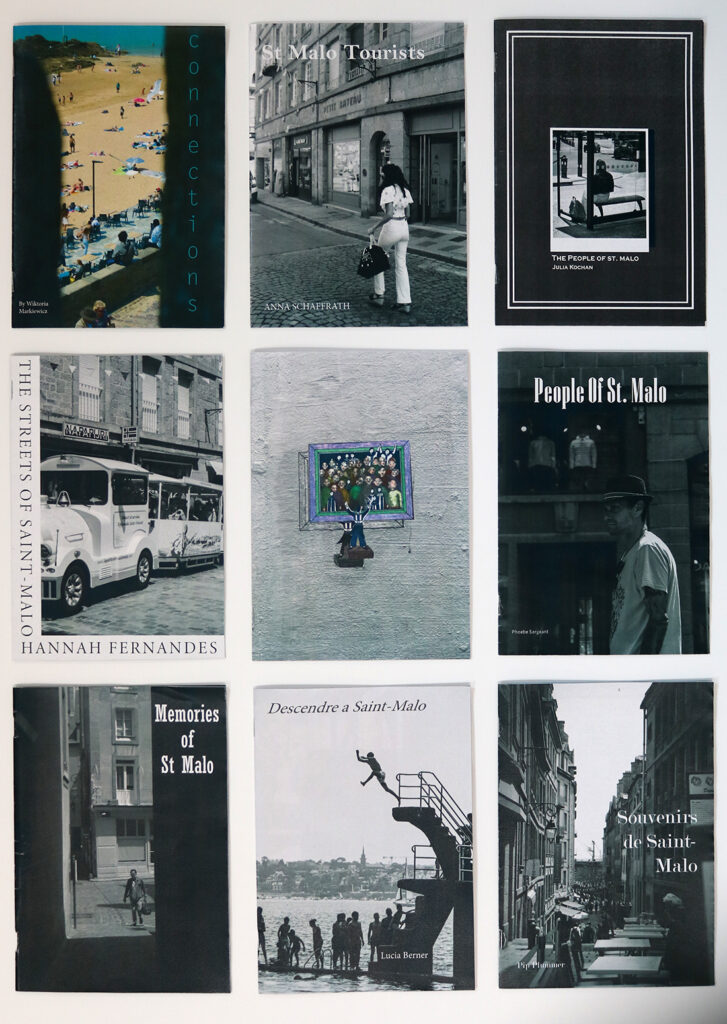

NARRATIVE & STORY
NARRATIVE is essentially the way a story is told. For example you can tell different narratives of the same story. It is a very subjective process and there is no right or wrong. Whether or not your photographic story is any good is another matter.
Narrative is constructed when you begin to create relationships between images (and/or text) and present more than two images together. Your selection of images (editing) and the order of how these images appear on the pages (sequencing) contributes significantly to the construction of the narrative. So too, does the structure and design of the photo-zine. However, it is essential that you identity what your story is first before considering how you wish to tell it.
In order for you to understand better how narrative works in photography let’s consider the differences between narrative and story when making a photo-zine. For a more in-depth understanding of NARRATIVE and PHOTOGRAPHY go to blog post below.
Once you have considered the points made between the differences in narrative and story and thought about what story you want to tell about St Helier Harbour and the images that that you have made in response, consider the following:
STORY: What is your story?
Describe in:
- 3 words
- A sentence
- A paragraph
NARRATIVE: How will you tell your story?
- Images > New St Helier Harbour photographs
- Archives > Old photographs of St Helier Harbour from SJ photo-archive or JEP Photographic Archive
- Texts > Write a short introduction or statement about your picture story, image captions
- Typography > creative uses of words, letters, font-types, sizes
Add a selection of your final 10-16 images as a mood-board/ gallery to the blog post, including any archive material too.
In the folder below you will find archive images from the photo-archive at the Societe Jersiaise and other found images from the internet.
M:\Radio\Departments\Photography\Students\YR 13 OBSERVE, SEEK, CHALLENGE 2024-2025\ST HELIER HARBOUR
EDITING & SEQUENCING
EDITING: You may have to revisit your selected images that you used in producing page-spreads. For the zine-design you need a set of 12-16 images that are edited and standardised as either colour or B&W images, or a combination of the both. You may want to consider your final selection with reference to how individual pictures relate and tell a story according to the construction of a traditional picture-story.
SEQUENCING: Print your final set of 12-16 images as small work prints using print Microsoft wizard (4 images per page, 9x13cm). Cut images using guillotine and layout on table and begin to sequence them to construct a narrative. Produce a 16 page zine mock and past images into using masking tape. Consider the following:
- Think about your theme or story.
Think about start, middle and end images. - Which images are major (establishing shots, full page, double page), and minor (portrait, detail shots, small images, multiple images on the page etc.)
- Think about visual relationship between images and their juxtaposition e.g colour, shapes, subject, repetition, landscape, portrait, objects, details etc.
- What happens or changes over the series of images?
- Are you using your best images?
- Include archival images/ found images of St Helier Harbour – if appropriate.
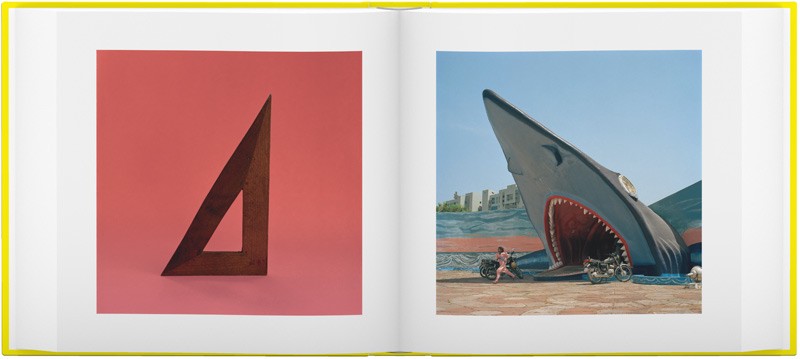
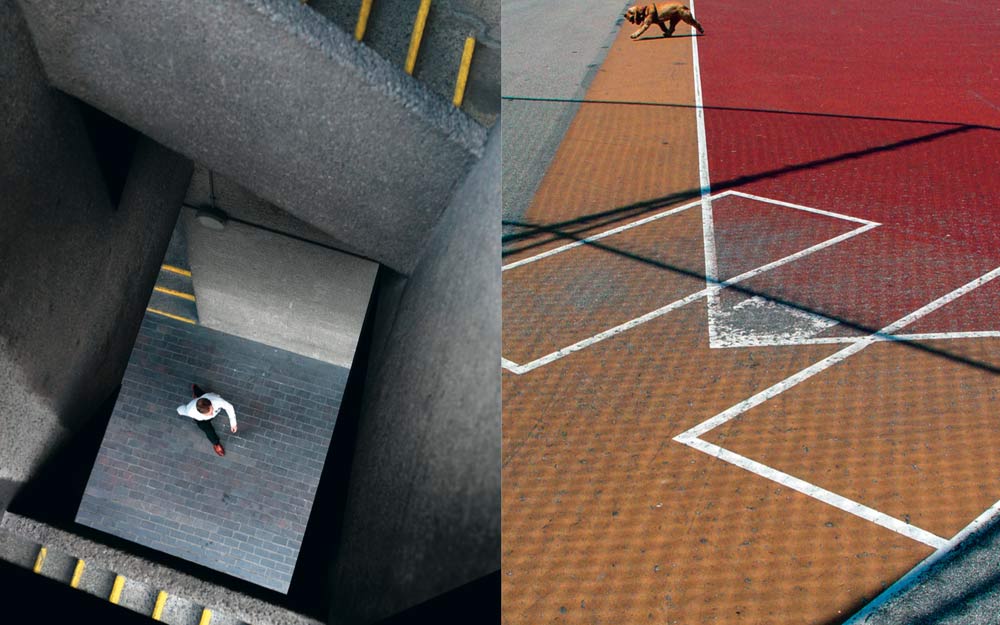
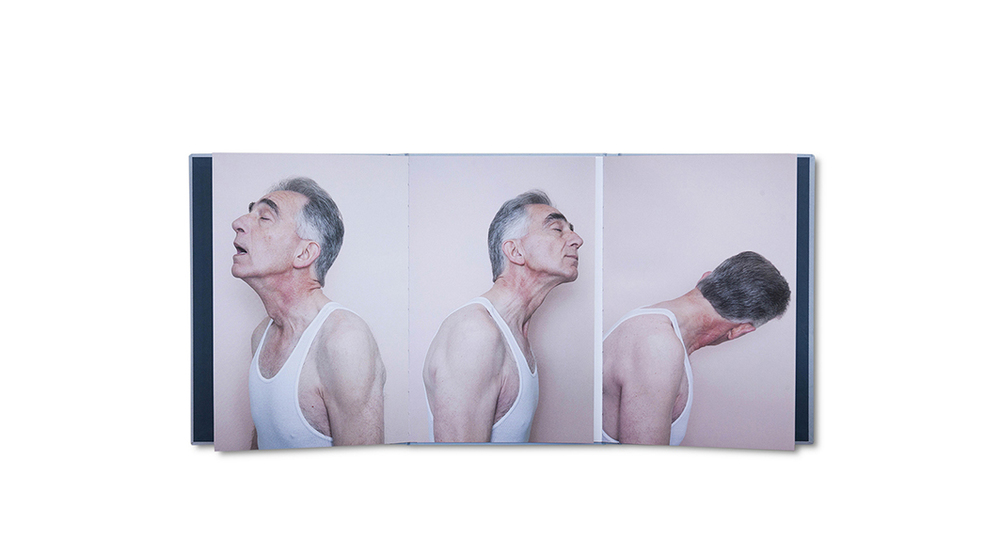
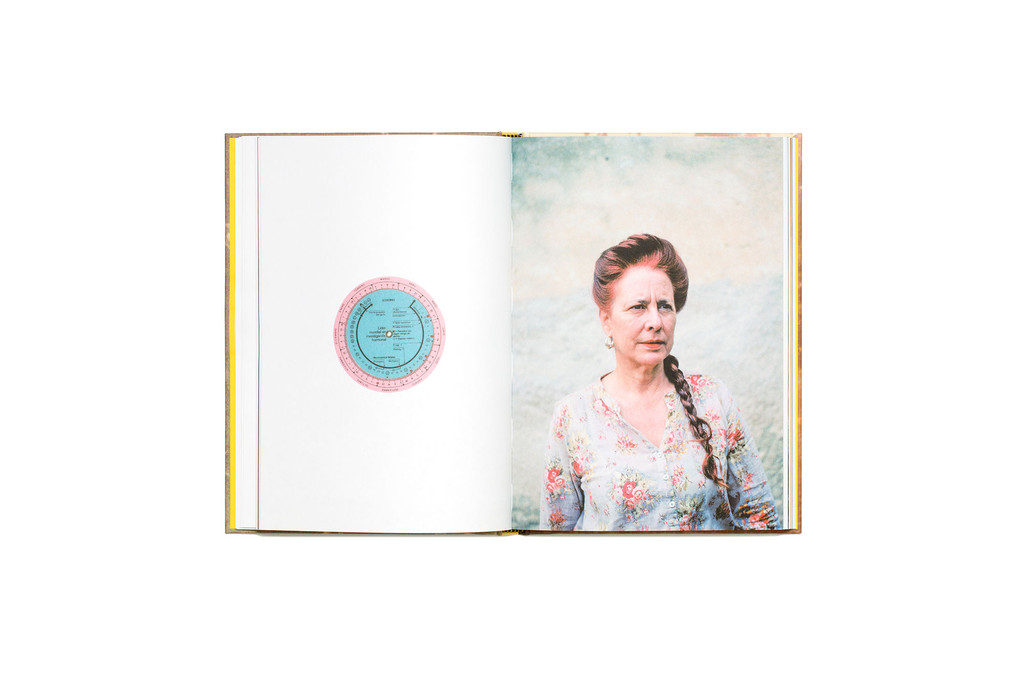




Week 5: 30 Sept-6 Oct
DESIGN & LAYOUT
Complete the following blog posts
Mon-Tue: Zine research
Wed-Fri: Introduction to InDesign
RESEARCH > ANALYSIS
Research zines and newspaper design made by artists and photographer that will provide visual stimulus for your page design. Produce a mood board and consider the following in your analysis:
- How you want your design to look and feel
- Format, size and orientation
- Narrative and visual concept
- Design and layout
- Rhythm and sequencing
- Images and text
- Title and captions
InDesign
Create new document
width: 148mm
height: 210
pages: 16
orientation: portrait
columns:2
column gutter: 5mm
margins: top, bottom, inside, outside: 10mm
bleed: top, bottom, inside, outside: 3mm

Something to read: Something Tactile: Why Photographers Should Create Zines
Café Royal Books is a small independent publisher of photography photobooks or zines, and sometimes drawing, solely run by Craig Atkinson and based in Southport, England. Café Royal Books produces small-run publications predominantly documenting social, historical and architectural change, often in Britain, using both new work and photographs from archives. It has been operating since 2005 and by mid 2014 had published about 200 books and zines and they are held in major public collections
https://www.caferoyalbooks.com/

Editions Bessard is a paris-based independent publishing house created by pierre bessard in 2011. Focusing on working with artists, writers and curators to realise intellectually challenging projects in book form.


The new imprint Éditions Emile is named in honour of Emile F. Guiton, the founding father of the The Société Jersiaise Photographic Archive. The first set of publications is a series of small photo-zines comprising of 48 pages with an average of 30-40 images and a short text providing further context. With plans to publish three editions annually, each issue of ED.EM. will take a fresh look at a specific collection within the archive, by pairing it with either another collection or contemporary work, in order to re-contextualise the images, keeping the collections active and relevant for new audiences both in the island and beyond.
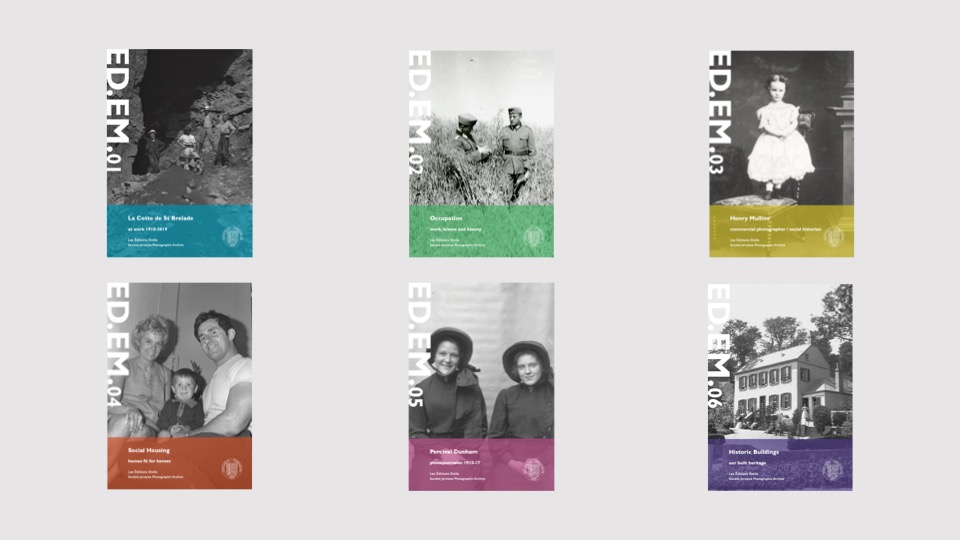
Week 6: 7-13 Oct
PRINTING & EVALUATING
Complete the following blog posts
Mon – Wed: Complete zine-design
Thur-Fri: Print and evaluate
DEVELOPING > Show variation of design
- Create 2-3 examples of alternative layouts for your photo-zine using Adobe InDesign and complete a visual blog post that clearly shows your decision making and design process using screen-prints.
- Make sure you annotate!
See examples of previous students blog charting his zine design process, here.
https://hautlieucreative.co.uk/photo20al/wp-admin/post.php?post=31481&action=edit
PRESENTATION > EVALUATION
Print, fold and bind final photo-zine and hand in for assessment.
Write an overall final evaluation (250-300 words) that explain in some detail how successfully you developed your project in response to themes of EXPLORE, SEEK OR CHALLENGE with specific focus on constructing a narrative presented as a photo-zine. Consider the following:
- Did you realise your intentions?
- How did you develop a narrative?
- Zine; including any contextual/ artists references, links and inspiration between your final design and theme.
FINAL OUTCOME: ZINE
Deadline: Fri 11 Oct
EXTENSION:
Select images for printing and/ or create a virtual gallery
PREPARE AND SAVE IMAGES FOR PRINTING:
File Handling and printing...
- Remember when EXPORTING from Lightroom you must adjust the file size to 1000 pixels on the Short edge for “blog-friendly” images (JPEGS)
- BUT…for editing and printing when EXPORTING from Lightroom you must adjust the file size to Short edge for “high resolution” images (JPEGS) like this…

- A5 Short Edge = 14.8 cm
- A4 Short Edge = 21.0 cm
- A3 Short Edge =29.7 cm
This will ensure you have the correct ASPECT RATIO
Ensure you label and save your file in you M :Drive and then copy across to the PRINT FOLDER / IMAGE TRANSFER
M:\Radio\Departments\Photography\Students\Image Transfer\Y13 St Helier Harbour prints
For a combination of images, or square format images you use the ADOBE PHOTOSHOP > NEW DOCUMENT + PRINT PRESETS on to help arrange images on the correct size page (A3, A4, A5)
You can do this using Photoshop, Set up the page sizes as templates and import images into each template, then you can see for themselves how well they fit… but remember to add an extra 6mm for bleed (3mm on each side of the page) to the original templates. i.e. A4 = 297mm x 210 but the template size for this would be 303mm x 216mm.
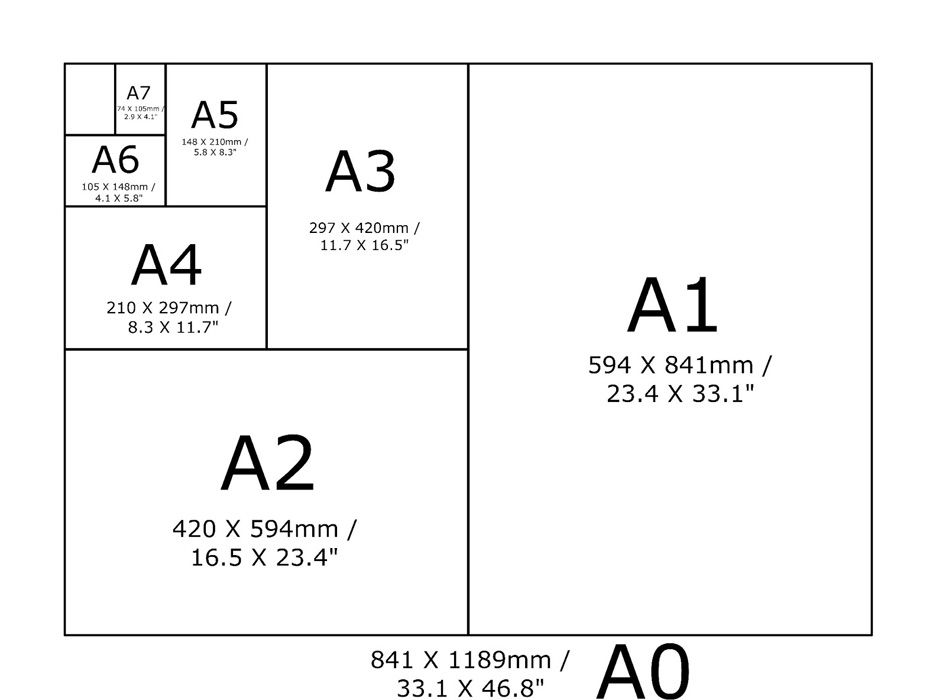
Making a Virtual Gallery in Photoshop
Download an empty gallery file…then insert your images and palce them on the walls. Adjust the persepctive, size and shape using CTRL T (free transform) You can also add things like a drop shadow to make the image look more realistic…
Here is access to a folder with images you can use freely:
M:\Radio\Departments\Photography\Students\YR 13 OBSERVE, SEEK, CHALLENGE 2024-2025\Gallery Mock-ups
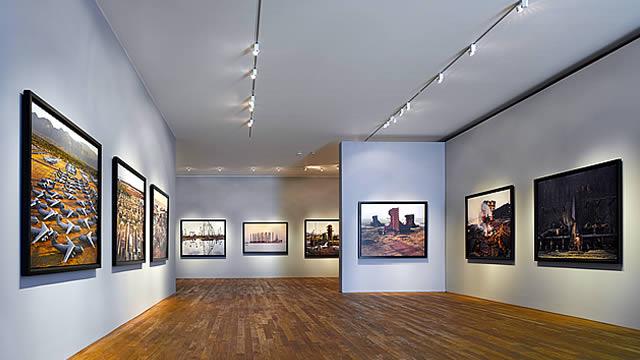

…or using online software
How I did it:
Step 1: Go to www.artsteps.com
Step 2: Sign in / up.
Step 3: Create.
Step 4: Create your own location or choose a template.
Step 5: Upload your images, put them in your exhibition, name it and give it a description.
Step 6: Present / view your Exhibition.
Week 4: 14-20 Oct
WINDOWS & MIRRORS: Written and Photo-assignments
Complete the following blog posts
Your task in the next four weeks is to produce a short film of 1-3 minutes based on a narrative that you have constructed using still-images made from St Helier harbour.
The production of the film will be supported by a workshop by Sam Hills, a Hautlieu alumni and sound designer who completed a degree in Audio & Music Production at Buckinghamshire New University in 2020. Using original recordings from St Helier harbour from his own sound archive he will introduce you to Audition in developing your own sound scape for your short film.
Here a few students films from the past…replace with film from Elizabeth Castle?
Week 7-8-9: 14 Oct – 8 Nov
FILM & SOUND
Complete the following blog posts
Mon 14 Oct: Lecture > Steve Carter
Steve Carter is an alumni of Hautlieu School, who worked for many years in the film industry as an Art Director. He will do presentation about his work and career and also provide feedback on the films that you will be making.
1. CASE STUDY: Chris Marker: La Jétte (1962) > Narrative in moving images
what task do you want them to do?
Chris Marker, (1921-2012) was a French filmmaker, poet, novelist, photographer, editor and multi-media artist who has been challenging moviegoers, philosophers, and himself for years with his complex queries about time, memory, and the rapid advancement of life on this planet. Marker’s La Jetée is one of the most influential, radical science-fiction films ever made, a tale of time travel. What makes the film interesting for the purposes of this discussion, is that while in editing terms it uses the language of cinema to construct its narrative effect, it is composed entirely of still images showing images from the featureless dark of the underground caverns of future Paris, to the intensely detailed views across the ruined city, and the juxtaposition of destroyed buildings with the spire of the Eiffel Tower. You can read more here about the meaning of the film and watch the full version (29 mins) of the film here.
FILM AND NARRATIVE: Click here to learn more about conventions in film making and narrative theory with reference to the camera/ cinematography, sound and editing moving images.
Film Editing | 2021 Photography Blog (hautlieucreative.co.uk)

Thurs-Fri: develop a mood-board and storyboard
2. IMAGES: Produce a mood-board of images that will inspire your visual language, style and aesthetic of your film. This can include similar set of images that you used in the zine layout or be a new set of images from St Helier harbour.
3. ARCHIVE: The film must include archival material, ie. images, footage, maps, documents relevant to your film narrative and historical research – use online catalogues from Société Jersiase or Jersey Archive.
4. STORYBOARD/ SHOT LIST: Develop a storyboard or a shot list that provides you with a clear plan ahead of how you wish to make your 1-3 mins film, including shot sizes, camera angles, movement, lighting, individual scenes and mise-en-scene (the arrangement of the scenery in front of the camera) from location, props, people, lighting, sound etc.
A storyboard or shot list is a graphic layout that sequences illustrations and images with the purpose of visually telling a story. Filmmakers and video creators use storyboards to transfer ideas from their mind to the screen. Creating an effective story board takes skill, but you can learn from storyboard examples to gain some pro tips. Read more here about differences between Storyboard and Shot list. See more examples of story boards here.


Download storyboard template here:

More information about shot sizes here

Camera-angles: see here
Camera movement – read more here
In a storyboard, each shot will have a small section for brief text description. In this description, clarify what camera movement will be used in the shot.
The most fundamental camera moves are the zoom shot, camera pan, tilt shot, dolly shot, tracking shot, or pedestal. Of course, these are only a few types of camera movement.
MISE-EN-SCENE
Mise en scene plays a huge role in communicating the tone of a story — but what is mise en scene? In classical terms, mise en scene is the arrangement of scenery and stage properties in a play or film. Today, mise en scene is regarded as all of the elements that go into any single shot of a production. Click below to learn more about mise-en-scene
https://www.studiobinder.com/blog/mise-en-scene-elements-color-in-film/
Four of the most important aspects of mise en scene are: sets, props, costume/hair/makeup, and lighting. Here are examples from filmmakers Stanley Kubrick and Wes Anderson on how to apply color to these four aspects.
Mon 21 Oct: SOUND WORKSHOP > Sam Hills
Go to this folder for shared audio files:
M:\Radio\Departments\Photography\Students\Image Transfer\SH harbour\Audio files
5. SOUND: Develop a sound design of audio files from various sources, such as original recordings from locations at St Helier Harbour as supplied by Sam Hills. Include other sounds too, such as; sound FX, sound archives, Foley sounds recreated in the Hautlieu recording studio and other audio elements such as interviews, narration and spoken words, singing and music scores.
Sound: Import audio files into Adobe Audition and edit on the timeline. Show experimentation with mixing audio files using…
Here is access to Sound Effect archives:
Hautlieu Media department:
M:\Radio\Departments\Media\Students\Sound FX
Free online websites
https://freesound.org
https://www.zapsplat.com
https://sound-effects.bbcrewind.co.uk
https://soundbible.com
https://www.freesoundeffects.com
Archives: You can find relevant material, such as images, maps and documents your visit to SJ Photo-Archive here, that you may wish to use in your film.
M:\Radio\Departments\Photography\Students\Image Transfer\NOSTALGIA\SJ Photo-Archive\Elizabeth-castle-images
6. FILM EDITING:
Organisation: Create new folder FILM on local VideoData drive on your computer. Download files from from camera card into:
Save still images into a sub-folder: STILLS
Save video clips into a sub-folder: VIDEO
Save audio files into a sub-folder: AUDIO
Still-images: Import still-images into Lightroom and create a collection FILM under project folder: ST HELIER HARBOUR. Edit and adjust images and export as high-res jpgs ready for import into Adobe Premiere
Moving-images: Import still-images/ video clips into Adobe Premier and edit on the timeline. Show experimentation with cuts/ transitions/ duration. Adjust exposure, colour grading profiling….
Title and credits: Consider typography/ graphics/ styles etc. For more creative possibilities make title page in Photoshop (format: 1920 x 1080 pixels) and import as a high-res JPEG file into your project folder on the local: VideoData drive.
Export: Export film as mp4 file and upload to Youtube account and embed on Blog. Follow these steps:
- In Premier: Click on Sequence > Render IN/OUT
- File > Export > Media
- Export Settings: Format H.264
- Output Name: use title of your film and save to V:Data drive
- Click Export at bottom
- Using Microsoft Stream: Open up Office 365
- Go to All Apps and select Stream
- Create > Upload Video
- Browse to upload your exported film from V:Data drive
- Write a short description, choose thumbnail and publish
- My Content > Videos > embed film into Blog post with evaluation.
- In Youtube: Set up an account at home (www.youtube.com)
- Click Create (top right corner) > Upload video
- Select file > your exported film from V:Data drive
- Write a short description and choose thumbnail
- Once uploaded, embed film into Blog post with evaluation.
EVALUATING: Write an evaluation on the blog that reflects on you artistic intentions, film-editing process and collaborating as a group. Include screen-prints from Premiere and a few ‘behind the scenes’ images of the shooting and production.
FILM AND NARRATIVE > more HELPFUL guidelines
Click here to learn more about conventions in film making and narrative theory with reference to the camera/ cinematography, sound and editing moving images.
Film Editing | 2021 Photography Blog (hautlieucreative.co.uk)

DEADLINE: Fri 8 Nov
Week 10: 11-17 Nov
WINDOWS & MIRROS
ESSAY: Truth in Photography: Can a photograph lie?
Complete the following blog posts
Week 11: 18-24 Nov
PERSONAL STUDY
Complete the following blog posts
Week 3: 18 – 24 Sept
RESEARCH & PLANNING
Film: Elizabeth Castle
Complete the following blog posts
NOSTALGIA is often linked with the past and Jersey is an island obsessed with its unique history and heritage. The site of Elizabeth Castle is such an example, and it offers up many creative possibilities for constructing a photographic story based on historical research and new recorded material, such as still-images, moving images and sound. Your task in the next four weeks is to produce a short film of 2-3 minutes based on a narrative that you have constructed from over a 1000 years of rich history of Elizabeth Castle or in Jerriais, Lé Châté Lîzabé.

Your film will be a visual feast made of footage from a combination of still-images and/ or moving images (video). Part of your creative challenge is developing a sound scape made from original audio recordings on site. For the film production you can choose to work alone or in a group of 2-3 students.
This element of the film will be supported by a series of workshops by Sam Hills, a Hautlieu alumni and sound designer who completed a degree in Audio & Music Production at Buckinghamshire New University in 2020. He will be assisting us on location at Elizabeth Castle on Wed 27 September and also come into school/ classroom and deliver/ assist with editing your audio in post-production and help developing your sound scape.
Here a few students films from the past…
TASK: Produce a number of appropriate blog posts.
1. RESEARCH: Elizabeth Castle and decide which particular aspects of its 1000 year history you wish to make into a short film of 3-5 mins – see below. Gather together research material, such as images, maps, documents, links to online sources and write a short synopsis of 300-500 words.
– Hermitage where St Helier is thought to have lived around 550 AD and a priory with about 6 monks.
– 16th century fortress against French invaders.
– Home to Royal exile Charles II during English civil war.
– Construction of a two-story barracks hospital in the early 19th century.
– Nazi occupation in 1940-45 where 100 German soldiers lived in Elizabeth Castle
– Construction work on bunkers carried out by forced workers from Russia and other countries.
– Post-war tourist attraction, current site of Jersey Heritage and living history.
2. VISUALS: Produce a mood-board of images that will inspire your visual language, style and aesthetic of your film. That can include found images of Elizabeth Castle and any other visual material, such as still-images from other filmmakers and films. See film, La Jétte by Chris Marker below.
3. ARCHIVE: The film must include archival material, ie. images, footage, maps, documents relevant to your film narrative and historical research – use online catalogues from Société Jersiase or Jersey Archive.
4. STORYBOARD/ SHOT LIST: Develop a storyboard or a shot list that provides you with a clear plan ahead of how you wish to make your 1-3 mins film, including shot sizes, camera angles, movement, lighting, individual scenes and mise-en-scene (the arrangement of the scenery in front of the camera) from location, props, people, lighting, sound etc.
A storyboard or shot list is a graphic layout that sequences illustrations and images with the purpose of visually telling a story. Filmmakers and video creators use storyboards to transfer ideas from their mind to the screen. Creating an effective story board takes skill, but you can learn from storyboard examples to gain some pro tips. Read more here about differences between Storyboard and Shot list. See more examples of story boards here.


Download storyboard template here:

More information about shot sizes here

Camera-angles: see here
Camera movement – read more here
In a storyboard, each shot will have a small section for brief text description. In this description, clarify what camera movement will be used in the shot.
The most fundamental camera moves are the zoom shot, camera pan, tilt shot, dolly shot, tracking shot, or pedestal. Of course, these are only a few types of camera movement.
MISE-EN-SCENE
Mise en scene plays a huge role in communicating the tone of a story — but what is mise en scene? In classical terms, mise en scene is the arrangement of scenery and stage properties in a play or film. Today, mise en scene is regarded as all of the elements that go into any single shot of a production. Click below to learn more about mise-en-scene
https://www.studiobinder.com/blog/mise-en-scene-elements-color-in-film/
Four of the most important aspects of mise en scene are: sets, props, costume/hair/makeup, and lighting. Here are examples from filmmakers Stanley Kubrick and Wes Anderson on how to apply color to these four aspects.
4. SOUND: Develop a sound design of audio files from various sources, such as original recordings from site at Elizabeth Castle (ambient sounds, directional sounds), sound FX, sound archives, Foley sounds recreated in the Hautlieu recording studio and other audio elements such as interviews, narration and spoken words, singing and music scores.
5. SCRIPT: Write a short script that provides a narrative of your film. This can include historical research and be constructed as a dialogue or narration to be recorded as a potential voice-over r in studio
6. ARCHIVE: The film must include archival material, ie. images, footage, maps, documents relevant to your film narrative and historical research – use online catalogues from Société Jersiase or Jersey Archive.
7. PRODUCTION: Assign roles and responsibilities within your group, such as producer, DP (director of photography), sound recorder, editor etc.
RESOURCES
Elizabeth Castle – A fortress just off the coast of Jersey to explore 400 years of history – built on a tidal Island in St Aubin’s Bay and dating from the 16th century onwards. Learn more here by visiting Jersey Heritage or Wikipedia

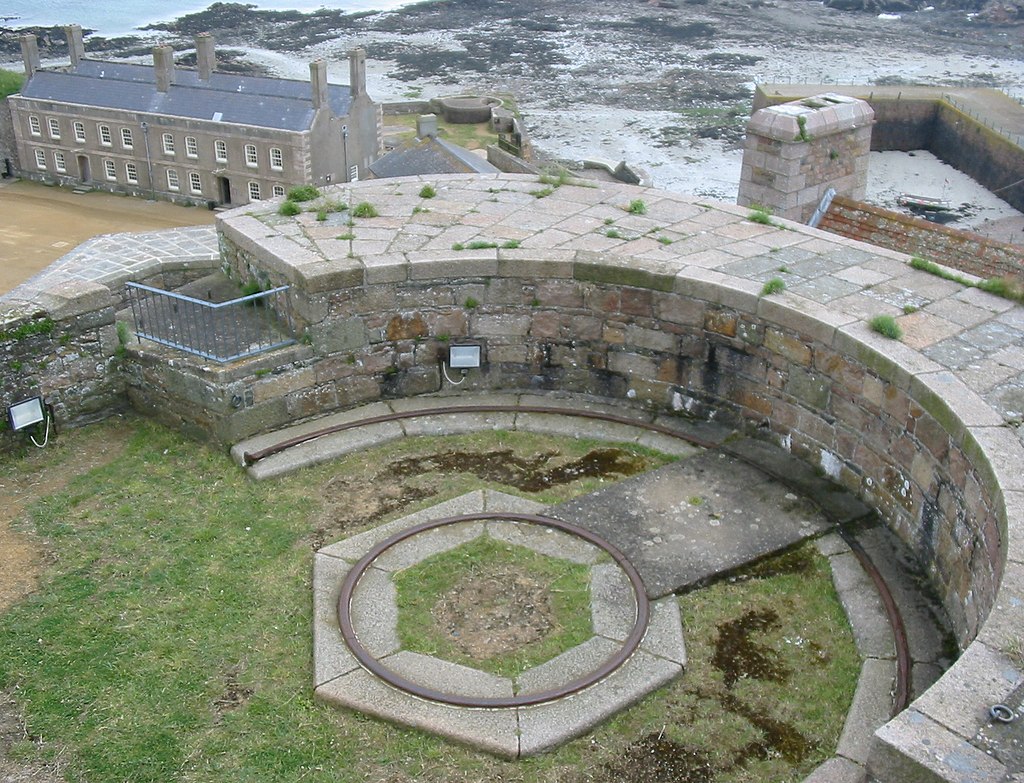







To reach the Castle and begin your adventure, walk along the causeway or take the amphibious Castle Ferry. Spend your day exploring this sprawling 15-acre fortress: climb the battlements dating back to the time Sir Walter Raleigh was Governor of Jersey; explore the grounds that gave refuge to King Charles II during the English Civil War; uncover the story of the Castle during the German Occupation in World War II; then discover the oldest part of this site, The Hermitage, where Saint Helier is thought to have lived around 550 A.D.
Step back in time to 1781 and meet the Castle Gunner who will tell you his story of the Battle of Jersey, but be prepared to be drafted into the Midday Parade and witness the firing of the musket and cannon.

Jersey Heritage is currently restoring parts of the Castle to bring them back into public use and you’ll see scaffolding around two important, historic buildings – the Georgian Military Hospital and the Officers’ Quarters.
This work is essential to secure the Castle’s future and you can find out more about what’s in store for the buildings here. For a detailed conservation plan of Elizabeth Castle done in 2005, click here


The Master Gunner will ensure that your backs are straight, your chins are high, and bellies are tucked-in as you stand to attention for the Midday Parade on the expanse of the Castle’s Parade Ground. Delight in the storytelling of the Gunner, who will enlighten you into the tales and mysteries of bygone times at the Castle, from the reign of Queen Elizabeth I to the Battle of Jersey in 1781. Then finally prepare yourself for the resounding bang of the signal gun and flintlock musket.
Read more on a Blog here about Elizabeth Castle or on Wikipedia here
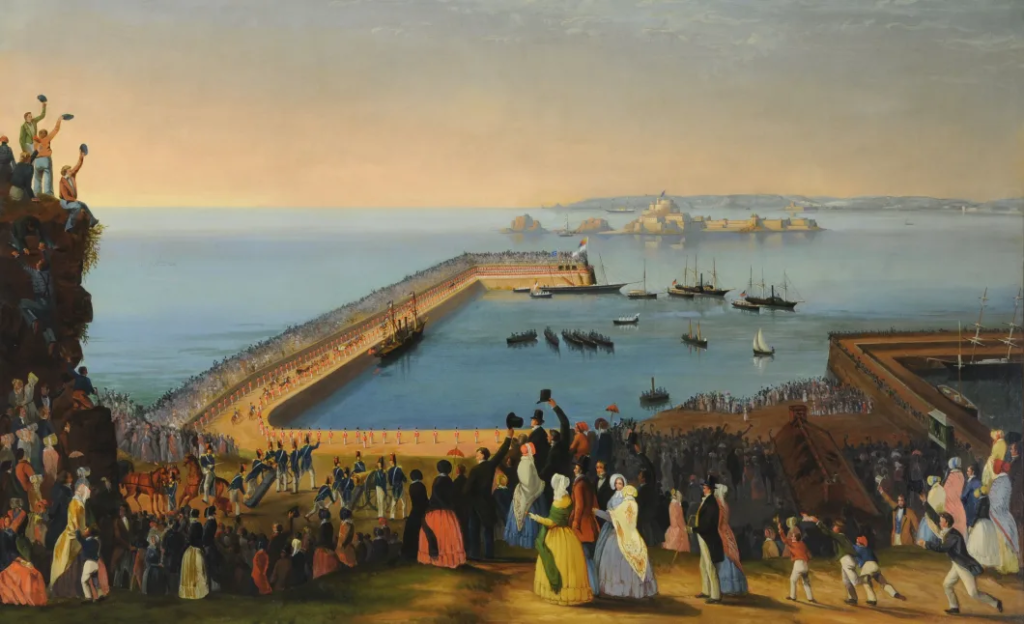
Philip John Ouless (1817–1885) Government House, Jersey
Historic Environment Record
The Historic Environment Record is a rich, publicly-accessible source of information about Jersey’s historic buildings, archaeological sites and finds spanning more than 250,000 years of human endeavour. New information is being added to the site all the time. Go to site here to learn more
The HER is also accessible in person. It is based at the Jersey Archive, the Island’s national repository of archival material and a key location for all reports on archaeological work and historic building recording carried out on the Island. This resource is available to a wide range of individuals, researchers, students and archaeologists. Jersey Heritage cares for the Island’s collections of archaeology, archives, art and social history, holding over 750,000 objects and documents.
Week 4: 25 Sept – 1 Oct
RECORDING > FILM: Elizabeth Castle
Complete the following blog posts
Mon-Tue > Chris Marker: La Jétte (1962)
Chris Marker, (1921-2012) was a French filmmaker, poet, novelist, photographer, editor and multi-media artist who has been challenging moviegoers, philosophers, and himself for years with his complex queries about time, memory, and the rapid advancement of life on this planet. Marker’s La Jetée is one of the most influential, radical science-fiction films ever made, a tale of time travel. What makes the film interesting for the purposes of this discussion, is that while in editing terms it uses the language of cinema to construct its narrative effect, it is composed entirely of still images showing images from the featureless dark of the underground caverns of future Paris, to the intensely detailed views across the ruined city, and the juxtaposition of destroyed buildings with the spire of the Eiffel Tower. You can read more here about the meaning of the film and watch the full version (29 mins) of the film here.
FILM AND NARRATIVE: Click here to learn more about conventions in film making and narrative theory with reference to the camera/ cinematography, sound and editing moving images.
Film Editing | 2021 Photography Blog (hautlieucreative.co.uk)

Wed 29 Sept and Wed 4 Oct – school trip
Société Jersiaise Photographic Archive and Elizabeth Castle
Location:
08:45: Meet at Société Jersiaise, 7 Pier Road, St Helier ready for 09:00 start. Students make their own way and must bring own camera, (with card and fully charged batteries), good footwear, appropriate clothing and provisions for lunch.
Activities:
WED 29 Sept
09:00 – 9:30: Presentation by photo-archivist Patrick Cahill about relevance of photo-archive showing examples of objects from the collection with reference to early photographic experiments as an introduction to the history and origin of photography.
09:30 – 11:00: Task 1: Students study literature from Lord Coutanche library about the history of Elizabeth Castle and make notes of relevant bits of text, quotes, and references they can use in developing their film script and narrative
Task 2: In groups students will work with set of images of Elizabeth Castle from different collections and construct a visual narrative through sequencing. Each group present.
11:00-12:00: Visit to exhibition: No Place Like Home
WED 4 OCT
11:15: Meet at West Park, St Helier where Duck vehicles is that will take us to Elizabeth Castle
12:00-13:30: Divide students into two groups
Group A: Sound recording workshop led by Sam Hills. Students will learn practical skills in recording sound using Digi recorders and variety of different microphones.
Group B: Students will be recording visuals, both stills-images and video footage relevant for their film
13:30-14:00: Lunch
14:00-15:30: Swap groups
15:30: Make our way from Elizabeth Castle to St Helier
Students make their own way home

This unit requires you to produce an appropriate number of blog posts which charts you project from start to finish including research, planning, analysis, recording, experimentation, evaluation, and presentation of creative outcomes.
HOMEWORK TASK
Essay: How are archives a repository of knowledge?
DEADLINE: TUE 17 OCT
To show knowledge and understanding of your experience day at the Société Jersiaise Photo-Archive you need to write an essay. Follow link and instructions here:
ARTHOUSE JERSEY No Place Like Home
Create a blog post that outlines our visit to the exhibition.
Include how and why it links to our theme of Nostalgia.
Choose an artist to provide more detail about their work, ideas and display methods
https://www.arthousejersey.je/

Week 5-6-7: 2 – 20 Oct
EDITING > DEVELOPING > PRESENTING > FILM
Complete the following blog posts
Organisation: Create new folder FILM on local VideoData drive on your computer. Download files from from camera card into:
Save still images into a sub-folder: STILLS
Save video clips into a sub-folder: VIDEO
Save audio files into a sub-folder: AUDIO
Still-images: Import still-images into Lightroom and create a collection Elizabeth Castle under project folder: NOSTALGIA. Edit and adjust images and export as high-res jpgs ready for import into Adobe Premiere
Moving-images: Import video clips into Adobe Premier and edit on the timeline. Show experimentation with cuts/ transitions/ duration. Adjust exposure, colour grading profiling….
SOUND WORKSHOP: Sam Hills
Go to this folder for shared audio files:
M:\Radio\Departments\Photography\Students\Image Transfer\NOSTALGIA\Audio files
Sound: Import audio files into Adobe Audition and edit on the timeline. Show experimentation with mixing audio files using…
Here is access to Sound Effect archives:
Hautlieu Media department:
M:\Radio\Departments\Media\Students\Sound FX
Free online websites
https://freesound.org
https://www.zapsplat.com
https://sound-effects.bbcrewind.co.uk
https://soundbible.com
https://www.freesoundeffects.com
Archives: You can find relevant material, such as images, maps and documents your visit to SJ Photo-Archive here, that you may wish to use in your film.
M:\Radio\Departments\Photography\Students\Image Transfer\NOSTALGIA\SJ Photo-Archive\Elizabeth-castle-images
FILM EDITING
Mise-en-scene > link to make blog post: Film Editing or MM’s old resources
Title and credits: Consider typography/ graphics/ styles etc. For more creative possibilities make title page in Photoshop (format: 1920 x 1080 pixels) and import as a high-res JPEG file into your project folder on the local: VideoData drive.
Export: Export film as mp4 file and upload to Youtube account and embed on Blog. Follow these steps:
- In Premier: Click on Sequence > Render IN/OUT
- File > Export > Media
- Export Settings: Format H.264
- Output Name: use title of your film and save to V:Data drive
- Click Export at bottom
- Using Microsoft Stream: Open up Office 365
- Go to All Apps and select Stream
- Create > Upload Video
- Browse to upload your exported film from V:Data drive
- Write a short description, choose thumbnail and publish
- My Content > Videos > embed film into Blog post with evaluation.
- In Youtube: Set up an account at home (www.youtube.com)
- Click Create (top right corner) > Upload video
- Select file > your exported film from V:Data drive
- Write a short description and choose thumbnail
- Once uploaded, embed film into Blog post with evaluation.
EVALUATING: Write an evaluation on the blog that reflects on you artistic intentions, film-editing process and collaborating as a group. Include screen-prints from Premiere and a few ‘behind the scenes’ images of the shooting and production.
DEADLINE: Wed 18 Oct
SCREENING: Thurs 19 Oct and Fri 20 Oct (with popcorn)
Prepare a short presentation of your film with Q&A.
EXTRAS:
Mon – Tue: RESEARCH > ANALYSIS
ARTIST REFERENCES > CASE STUDIES > INSPIRATIONS
You will only be allocated two lessons for this piece of work and it is expected that you use your study periods or work from home to complete the task to a high standard. Follow instructions below:
Research and analyse the work of at least 1, if not 2 photographers/ artists. Explore, discuss, describe and explain key examples of their work relevant to your project and intentions. Follow these steps:
1. Produce a mood board with a selection of images and write an overview of their work, its visual style, meaning and methods. Describe why you have selected to study their work and how it relates to the themes of OBSERVE, SEEK, CHALLENGE and your project about Jersey’s maritime heritage.
2. Select at least one key image and analyse in depth using methodology of TECHNICAL>VISUAL>CONTEXTUAL>CONCEPTUAL
3. Incorporate quotes and comments from artist themselves or others (art/ media /film critics, art/ media/ film historians, curators, writers, journalists etc) using a variety of sources such as YouTube, online articles, reviews, text, books etc. Make sure you reference sources and embed links in your blog post.
4. Compare and contrast your chosen artists in terms of similarities and differences in their approaches, techniques and outcomes of their work.
CASE STUDIES
other artists etc?
documentary based + ppt on documentary practice
Walktrue: what is documentary – research 2 mins + cold calling
Urban/ industrial:
Sebastiao Salgado (workers), Chris Killip (Tyneside), Mark Power (shipping forecast + Good morning America),
Historical: Albert Renger Patz > Bechers/ typology studies > Dusseldorf School of Photography – get stuff from Yr 12 Landscape module
something on documentary practice
use of archives
DOCUMENTARY PHOTOGRAPHY
In our summer project based on street photography in St Malo we learned about Henri Cartier-Bresson and the decisive moment. Cartier-Bresson is often seen as the forefather of photojournalism and documentary photography.
What is documentary photography?
Walktrue: research 2 mins + cold calling
In recent times documentary photography has expanded beyond observation and to become much more of personal interpretation and artistic representation of issues in relation to socio-economics, geography and politics. , often on the subjects of the environment or
Something on Photography and Place: how do you explore a sense of place through photography?
For a basic understanding of documentary photography, lets have a look at this PowerPoint:
When we begin to make work in response to REBELLION in the second half of this autumn term we will be experimenting with a different way to construct narrative using a staged approach to photography within the tradition of tableaux, as well as creating a series of self-portraits.
All texts from Bate, David (2016), Art Photography. London: Tate Publishing
New approaches to documentary in contemporary photography
David_Bate_The_Art_of_the_Document
On rise of Tableaux in contemporary photographic practice David_Bate_The_Pictorial_Turn

Sebastio Salgado
Chris Killip , British, (1946 – 2023) > recent exhibitions and books on shipping and tyneside
In Flagrante describes the communities in Northern England that were devastated by the deindustrialisation common to policies carried out by Thatcher and her predecessors starting in the mid-1970s. The book was accompanied by an exhibition at the V&A in London. It’s worth noting that the photographs initially came out of a joint exhibition in 1985 entitled ‘Another Country’, that Killip made with his close friend, the photographer Graham Smith.
“The objective history of England doesn’t amount to much if you don’t believe in it, and I don’t, and I don’t believe that anyone in these photographs does either as they face the reality of de-industrialisation in a system which regards their lives as disposable. To the people in these photographs I am superfluous, my life does not depend on their struggle, only my hopes. This is a subjective book about my time in England. I take what isn’t mine and I covet other peoples lives. The photographs can tell you more about me than about what they describe. The book is a fiction about metaphor.”
Chris Killip, Foreword to In Flagrante, 1988
Mark Power: The Shipping Forecats
Intangible and mysterious, familiar yet obscure, the shipping forecast is broadcast four times daily on BBC Radio 4. For those at, or about to put to sea, the forecast may mean the difference between life and death. In The Shipping Forecast, Mark Power documents the 31 sea areas covered by the forecast,

Mark Power (shipping forecast + Good morning America),
New Topographics was a term coined by William Jenkins in 1975 to describe a group of predominantly American photographers, such as Robert Adams, Lewis Baltz, Joe Deal, Frank Gohlke, Nicholas Nixon, John Schott, Stephen Shore, Henry Wessel Jr and Germans, Bernd and Hilla Becher who were inspired by the man-made world, selecting subject matter that was matter-of-fact. Their photographs had a banal aesthetic, in that they were formal and mostly black and white prints of the urban landscape.
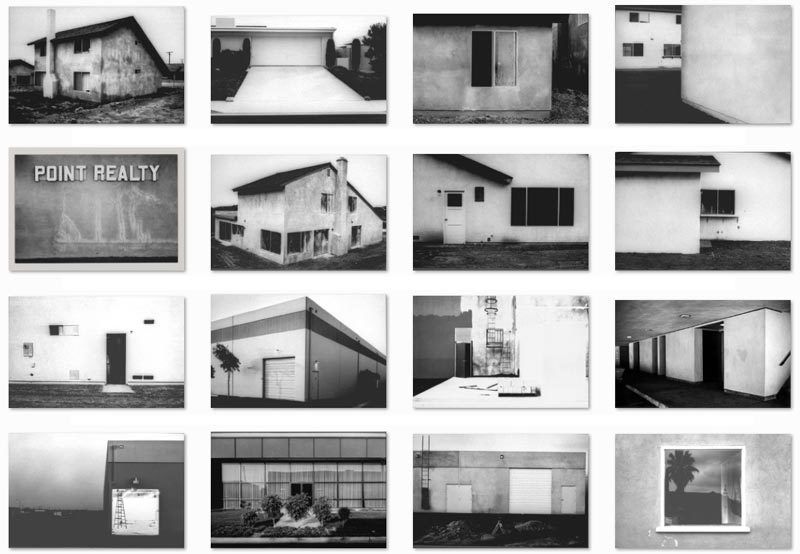

Analysis and discussion… starting points and key features of The New Topographics
- Foreground vs background | Dominant features
- Composition | low horizon line | Square format
- Perspective and detail / cluttering
- Wide depth of field | Large Format Camera
- Colour | impact and relevance
- Nationalism vs mobility vs isolation
- Social commentary | The American Dream ?
- An appreciation of the formal elements : line, shape, form, texture, pattern, tone etc

Explore Robert Adams seminal photobook: The New West here
Critic Sean O’Hagan, writing in The Guardian, said “his subject has been the American west: its vastness, its sparse beauty and its ecological fragility…What he has photographed constantly – in varying shades of grey – is what has been lost and what remains” and that “his work’s other great subtext” is silence…

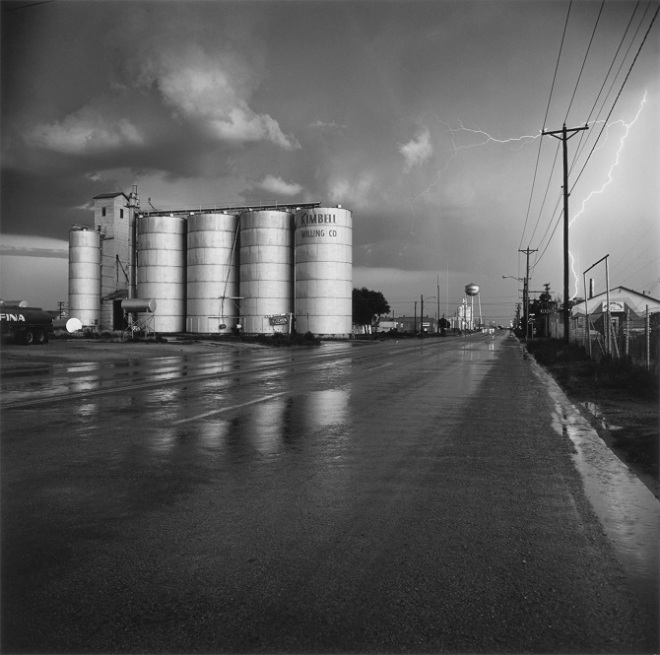

You could also look at these photographers who has been influenced by New Topographics…see below for images/ examples under RESOURCES…
Remember to use this

New Topographics was inspired by the likes of Albert Renger Patszch and the notion of The New Objectivity

TYPOLOGIES and the landscape
Typology means the study and interpretation of types and became associated with photography through the work of Bernd and Hilla Becher, whose photographs taken over the course of 50 years of industrial structures; water towers, grain elevators, blast furnaces etc can be considered conceptual art. They were interested in the basic forms of these architectural structures and referred to them as ‘Anonyme Skulpturen’ (Anonymous Sculptures.) Each industrial structure was photographed from eight different angles on an overcast day with light grey sky mimicking the detached white background in a photographic studio. Their aim was to capture a record of a landscape they saw changing and disappearing before their eyes so once again, Typologies not only recorded a moment in time, they prompted the viewer to consider the subject’s place in the world.
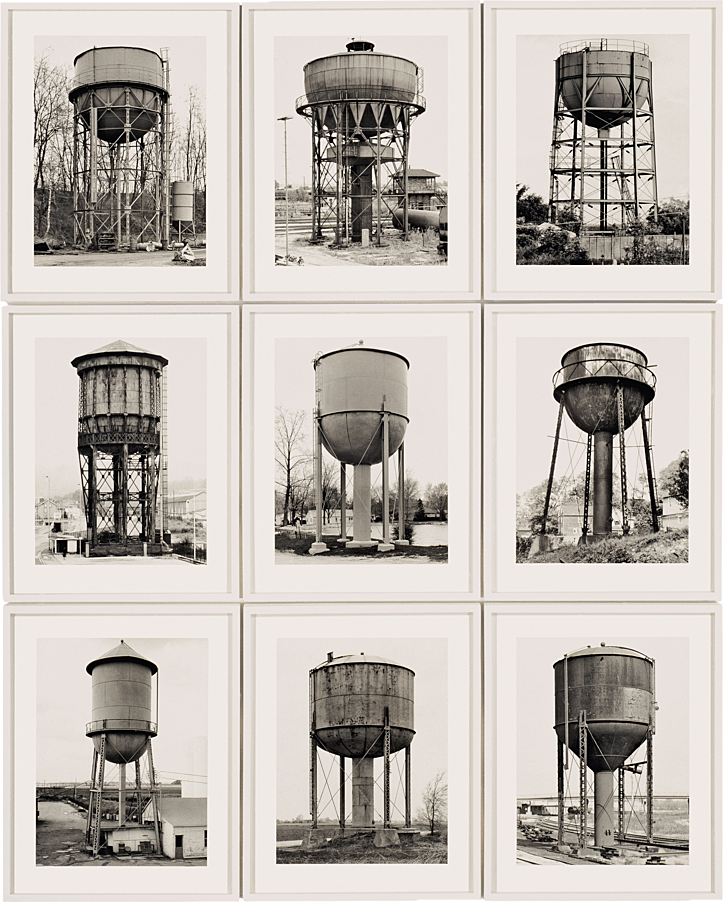

The Becher’s were influenced by the work of earlier German photographers linked to the New Objectivity movement of the 1920s such as August Sander, Karl Blossfeldt and Albert-Renger-Patzsch.
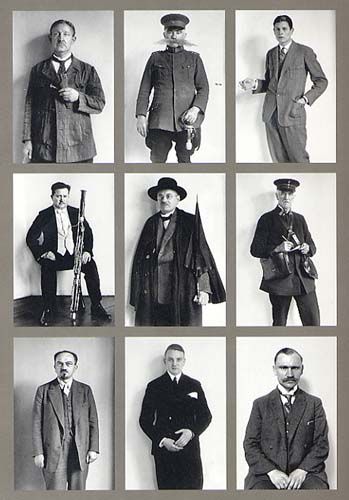


Read this useful introduction to the Becher’s work from American Photo magazine which describes their interest in the ‘Grid’ and their influence on future generations of photographers, members of the Düsseldorf School where Bernd and Hilla Becher taught between 1976 and 1996. Among his most renowned students are Andreas Gursky, Candida Höfer, Thomas Ruff, and Thomas Struth.




See also the work by Americans, William Christenberry and Ed Ruscha’s photographic works on types e.g. Twentysix Gasoline Stations (1964). Every building on the Sunset Strip (1966). Or Idris Khan‘s appropriation of Bechers’ images.





Bernd and Hilla Becher – Typologies of industrial architecture
Read this useful introduction to the Becher’s work from American Photo magazine which describes their interest in the ‘Grid’ and their influence on future generations of photographers, members of the Düsseldorf School.
The term ‘Typology’ was first used to describe a style of photography when Bernd and Hilla Becher began documenting dilapidated German industrial architecture in 1959. The couple described their subjects as ‘buildings where anonymity is accepted to be the style’.
Partly inspired by the likes of Karl Blossfeldt, August Sander and The New Objectivity (that we looked at in the previous project)
Stoic and detached, each photograph was taken from the same angle, at approximately the same distance from the buildings. Their aim was to capture a record of a landscape they saw changing and disappearing before their eyes so once again, Typologies not only recorded a moment in time, they prompted the viewer to consider the subject’s place in the world.
The Bercher’s influence as lecturers at the The Dusseldorf School of Photography passed Typologies onto the next generation of photographers. Key photographic typologists such as Thomas Struth, Thomas Ruff, Thomas Demand and Gillian Wearing lead to a resurgence of these documentary-style reflections on a variety of subject matter from Ruff’s giant ‘passport’ photos to Demand’s desolate, empty cities.





